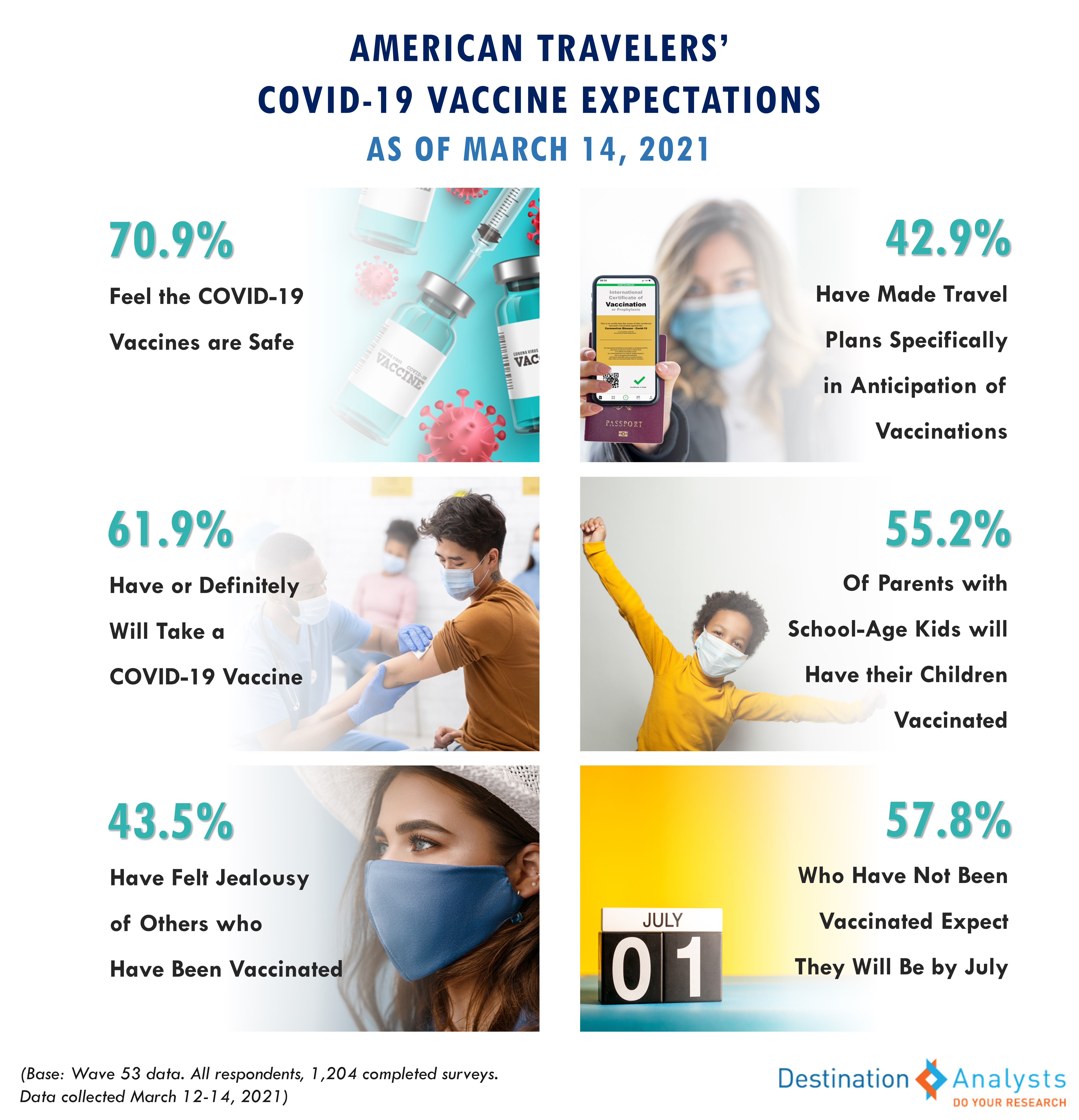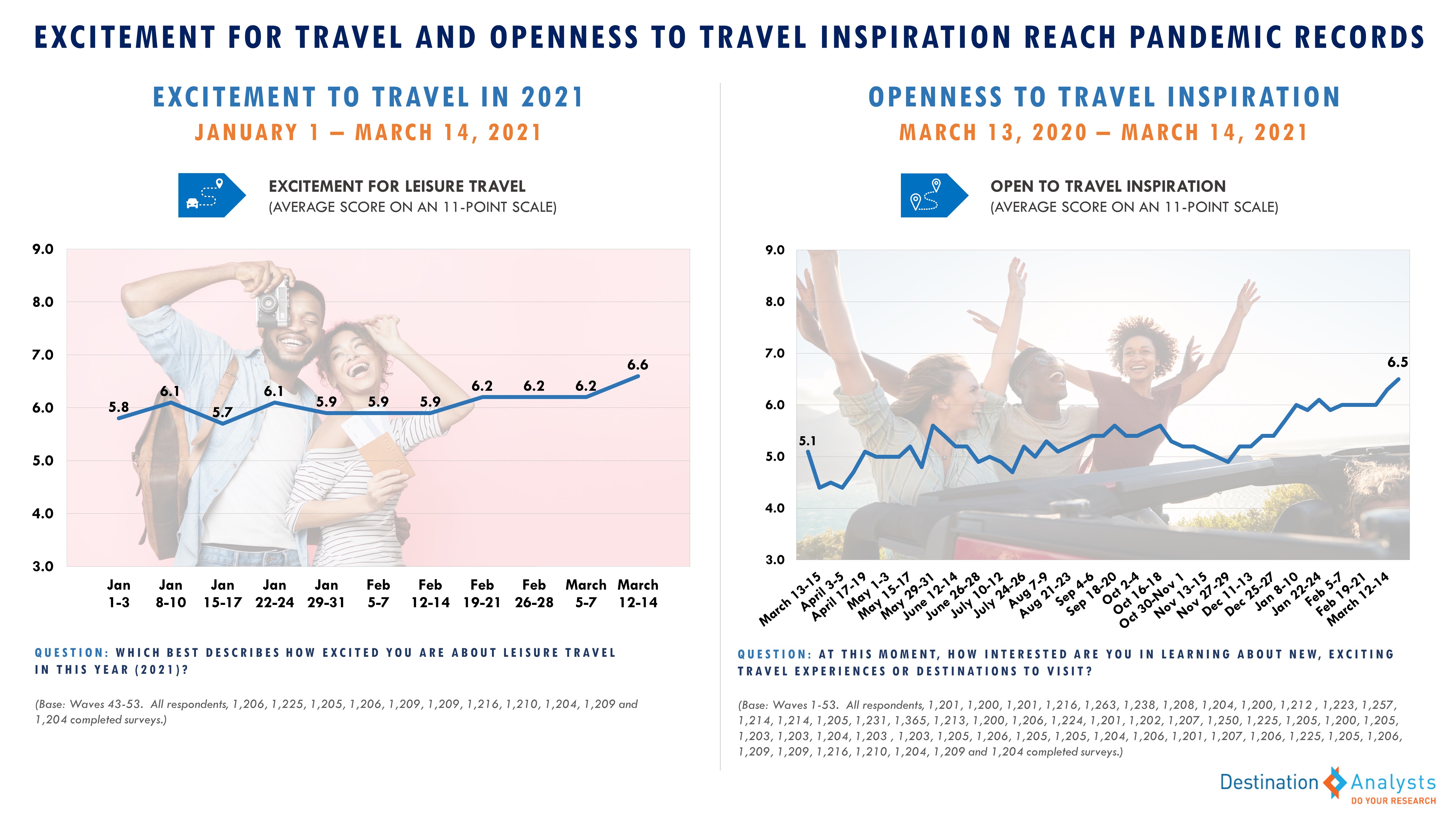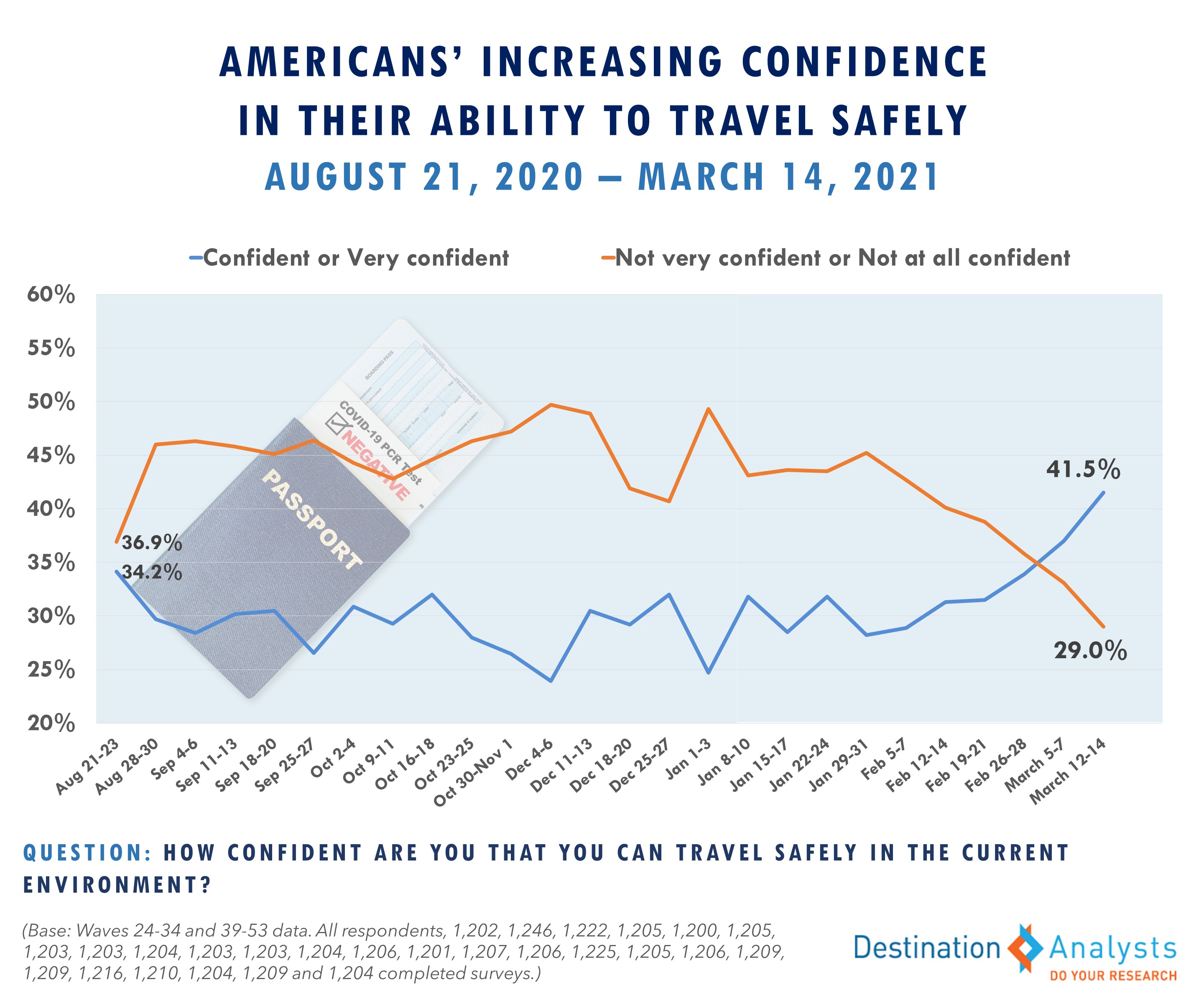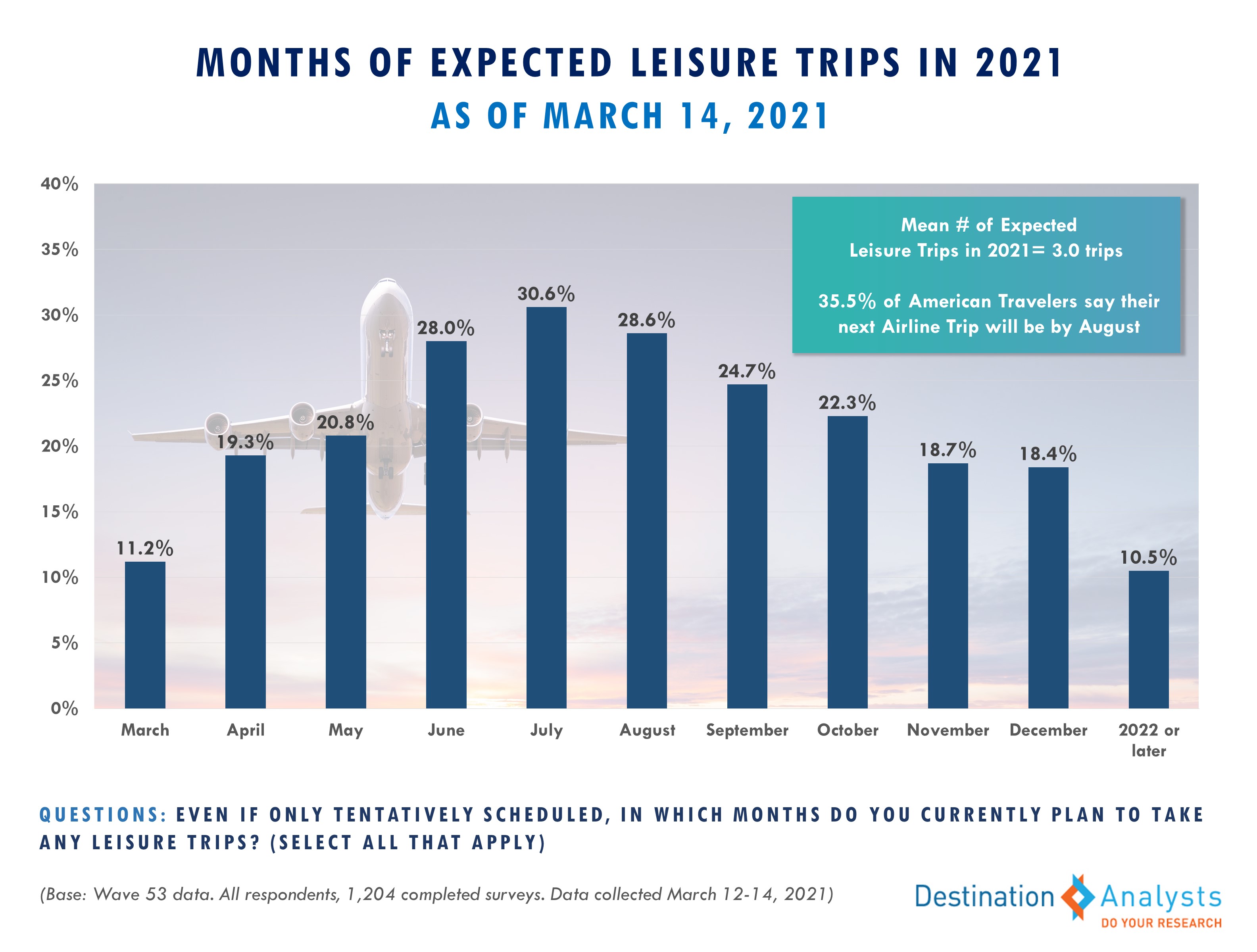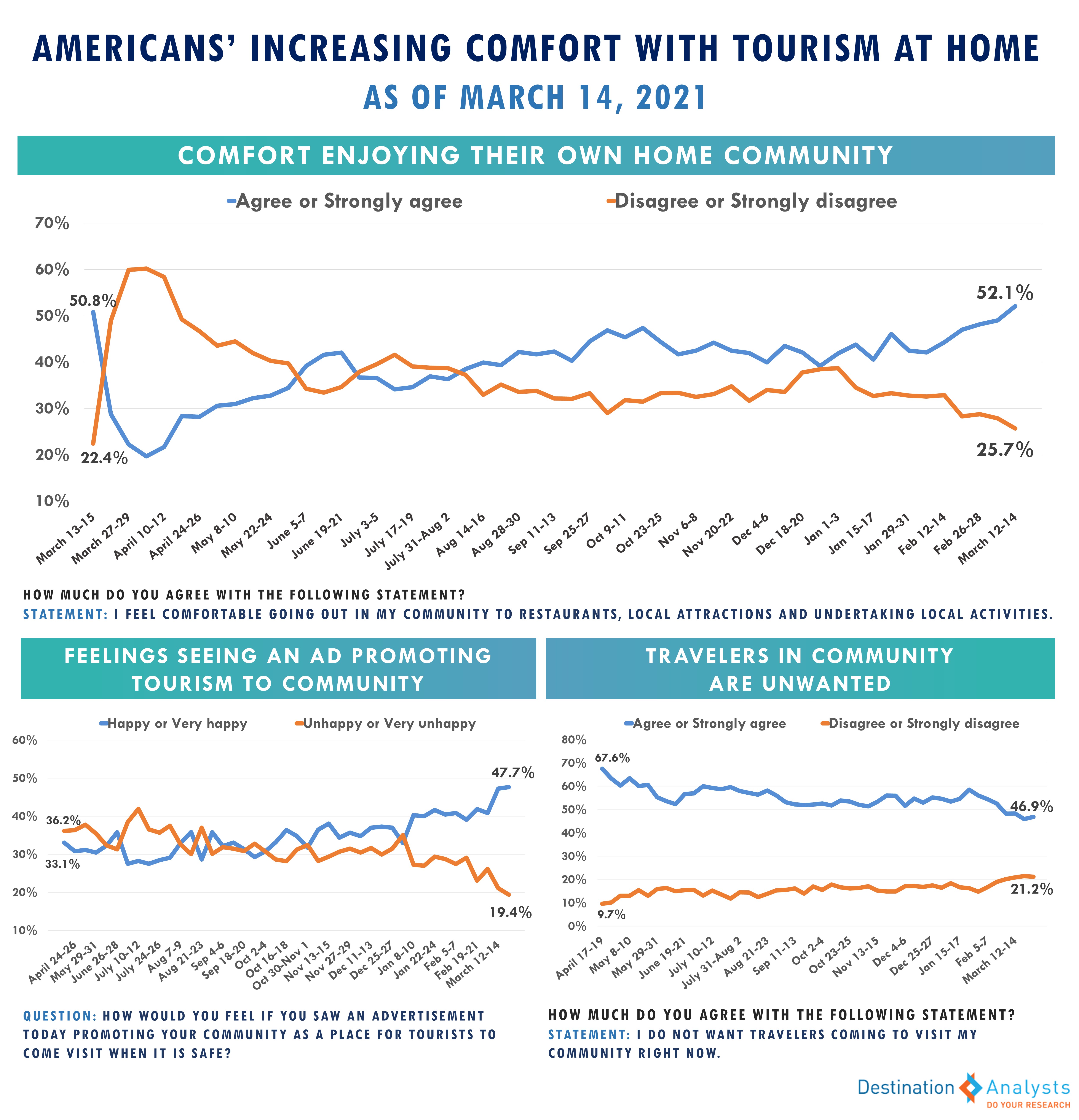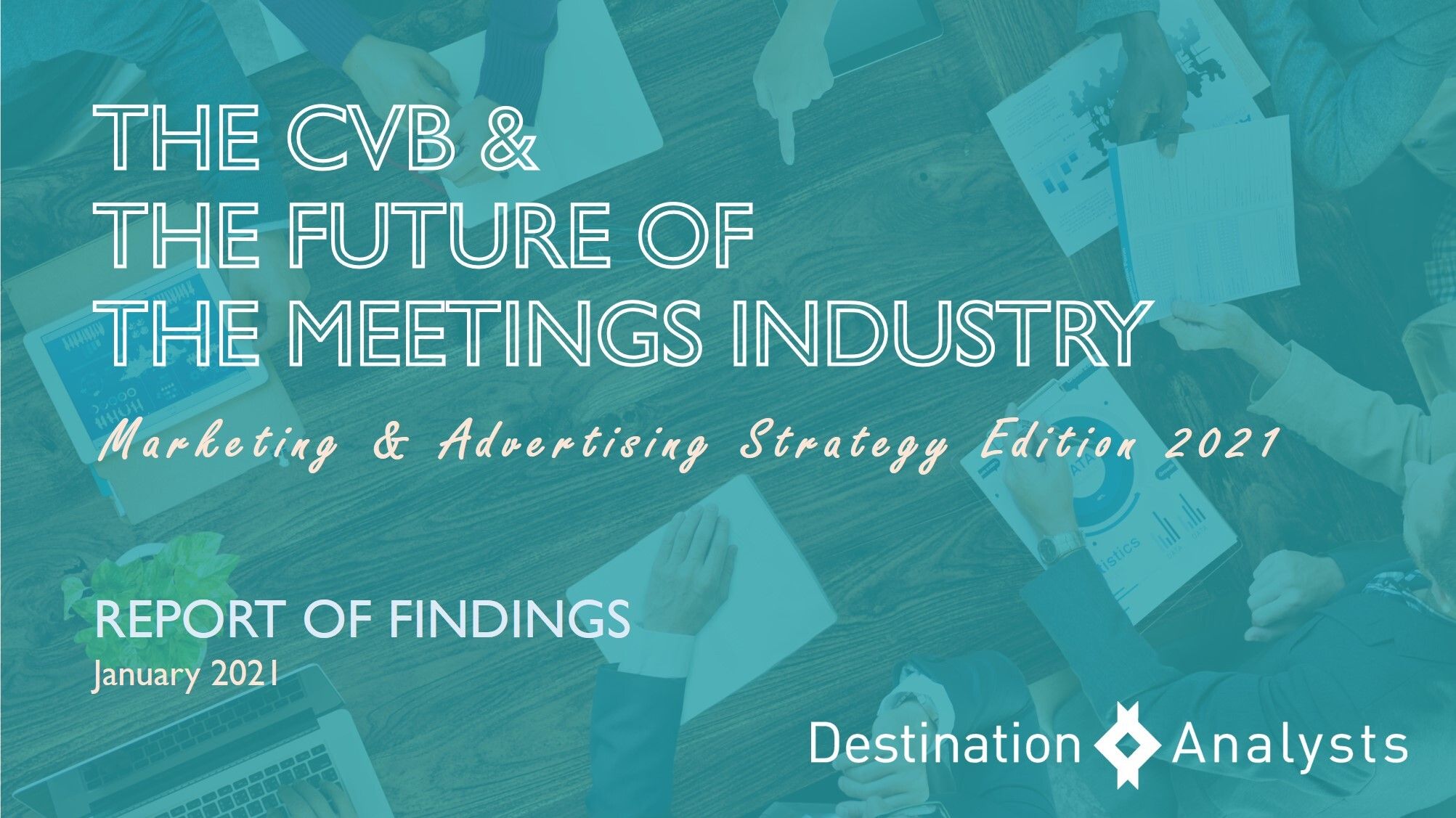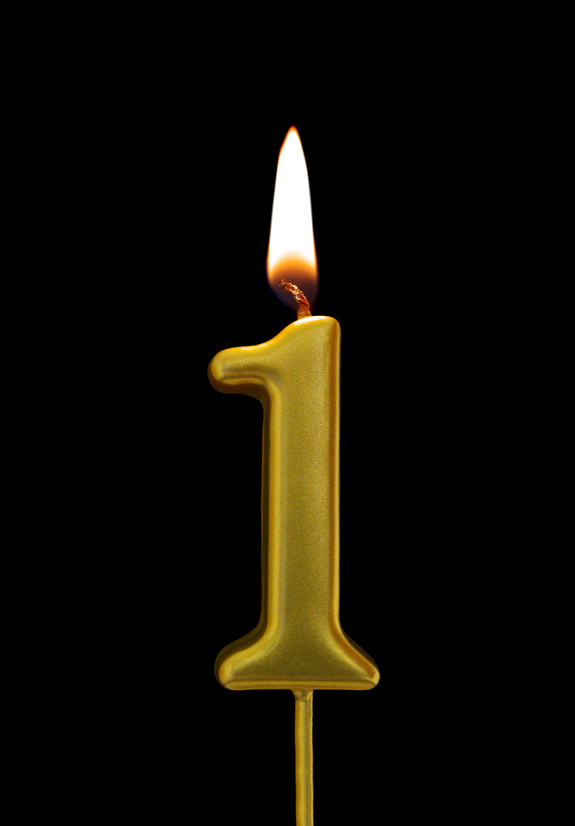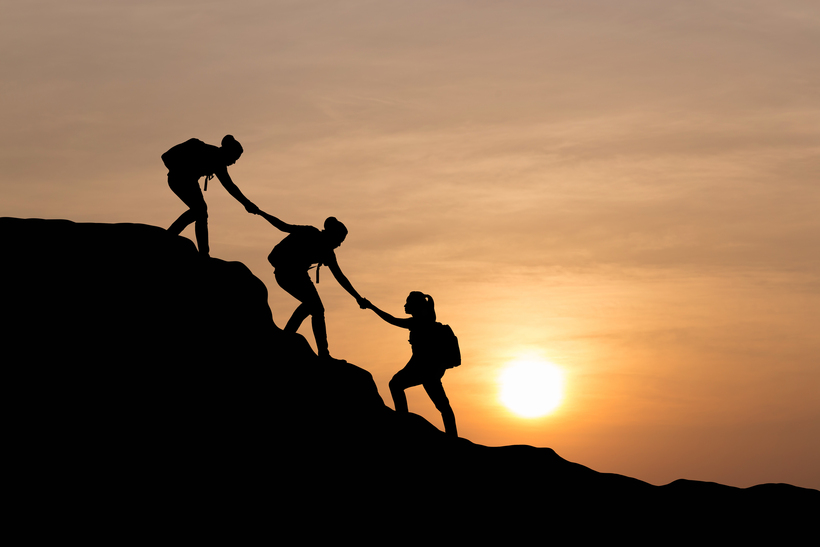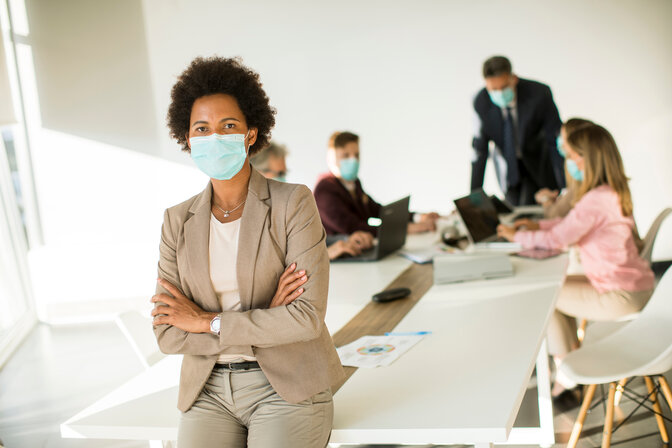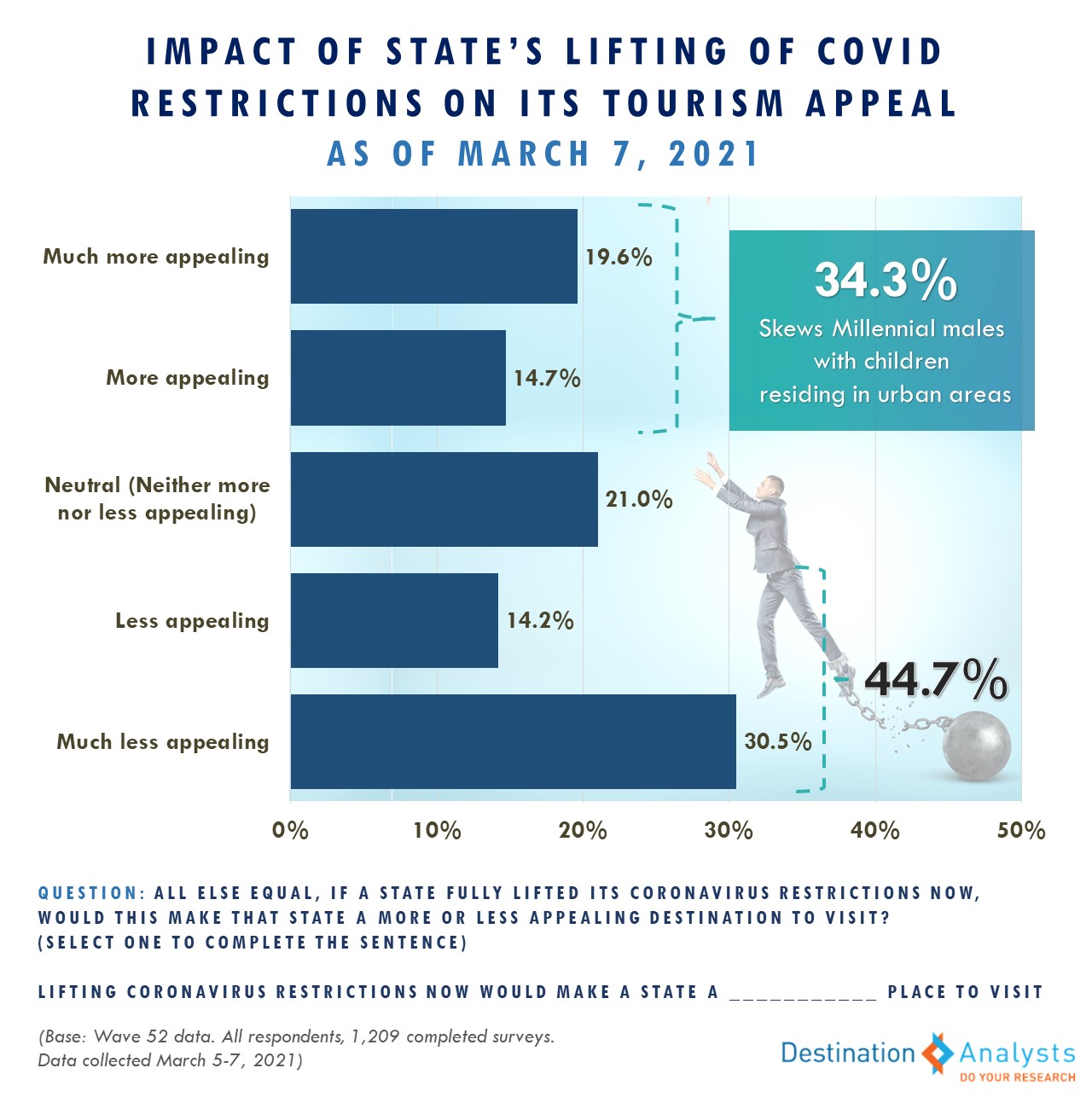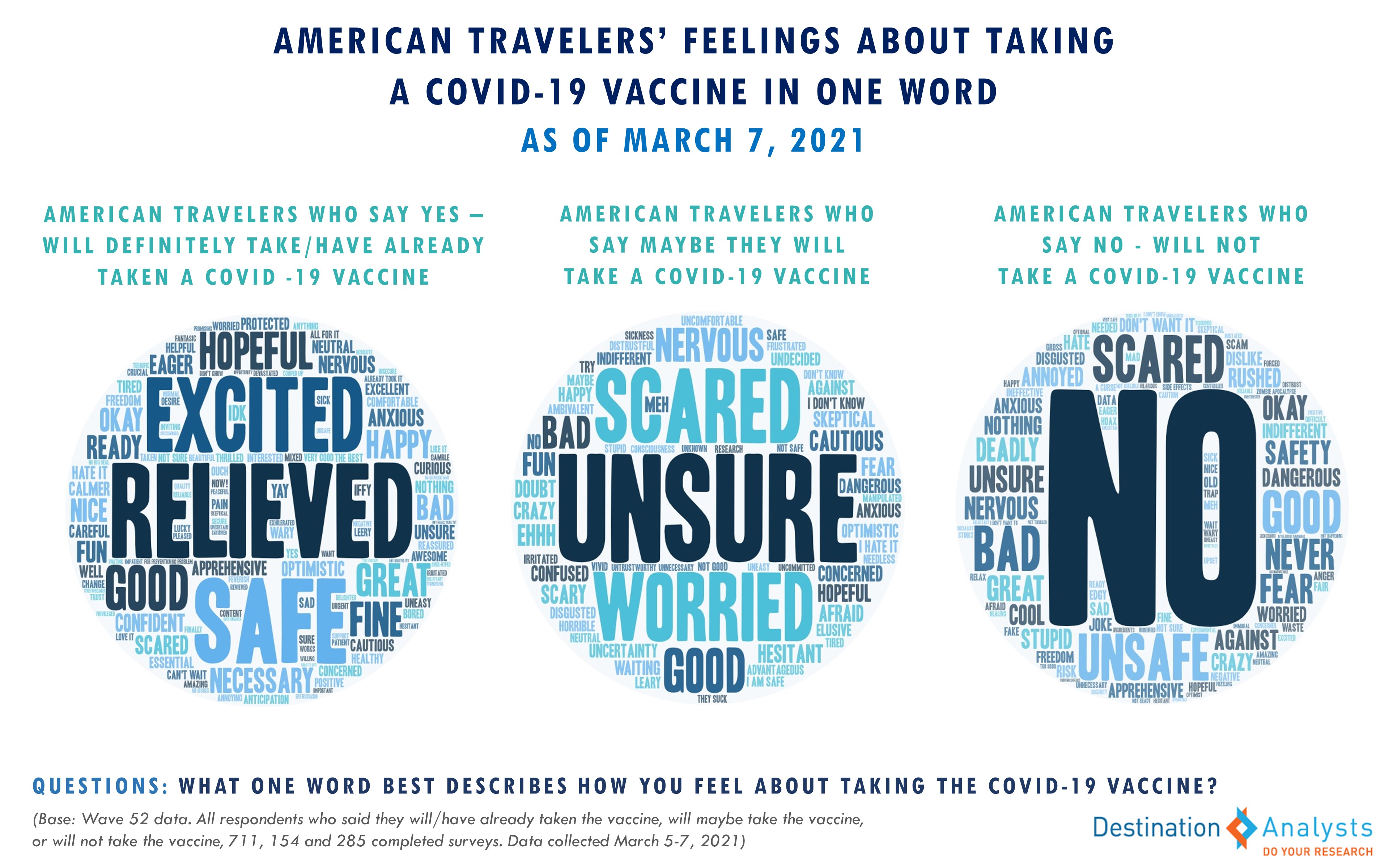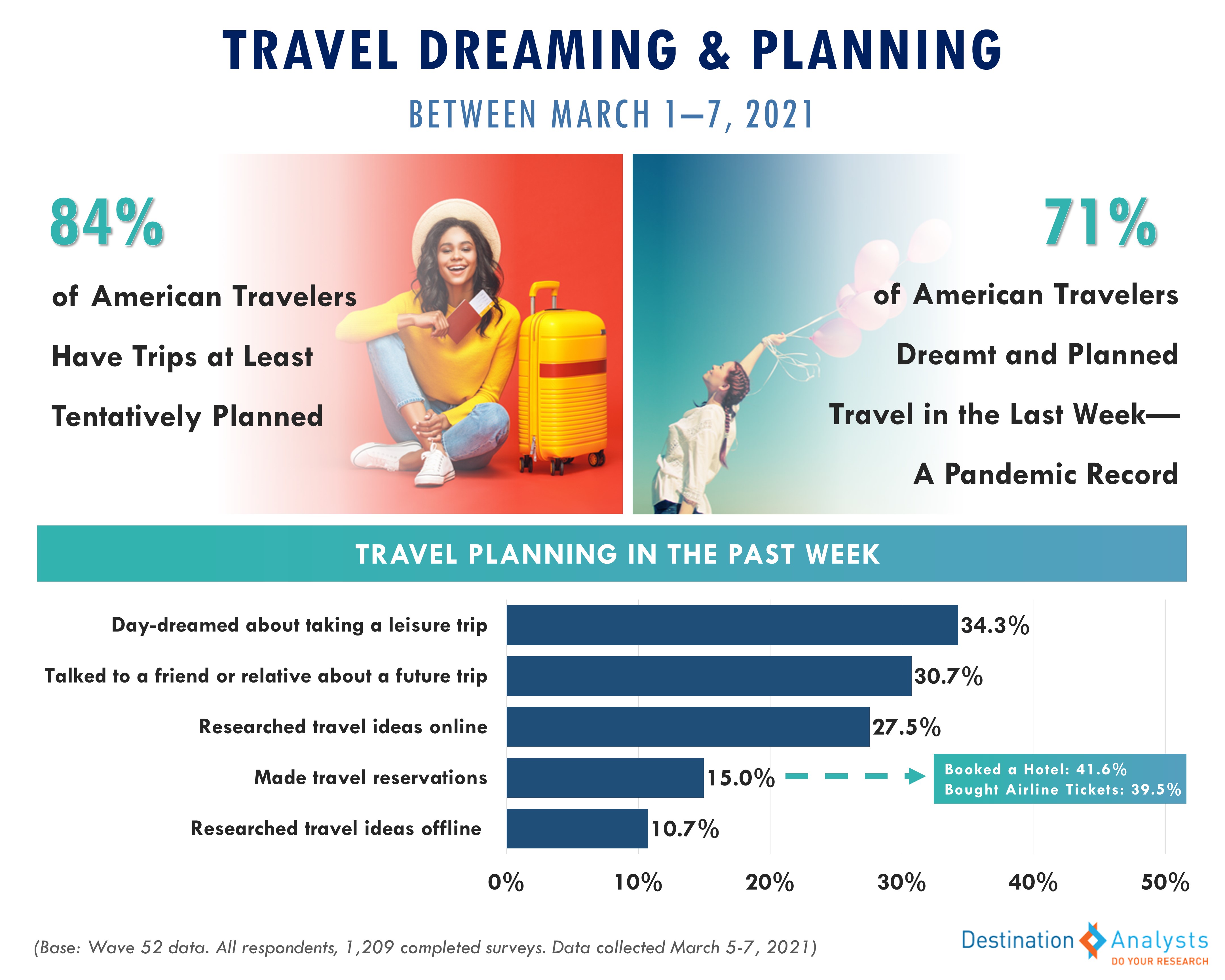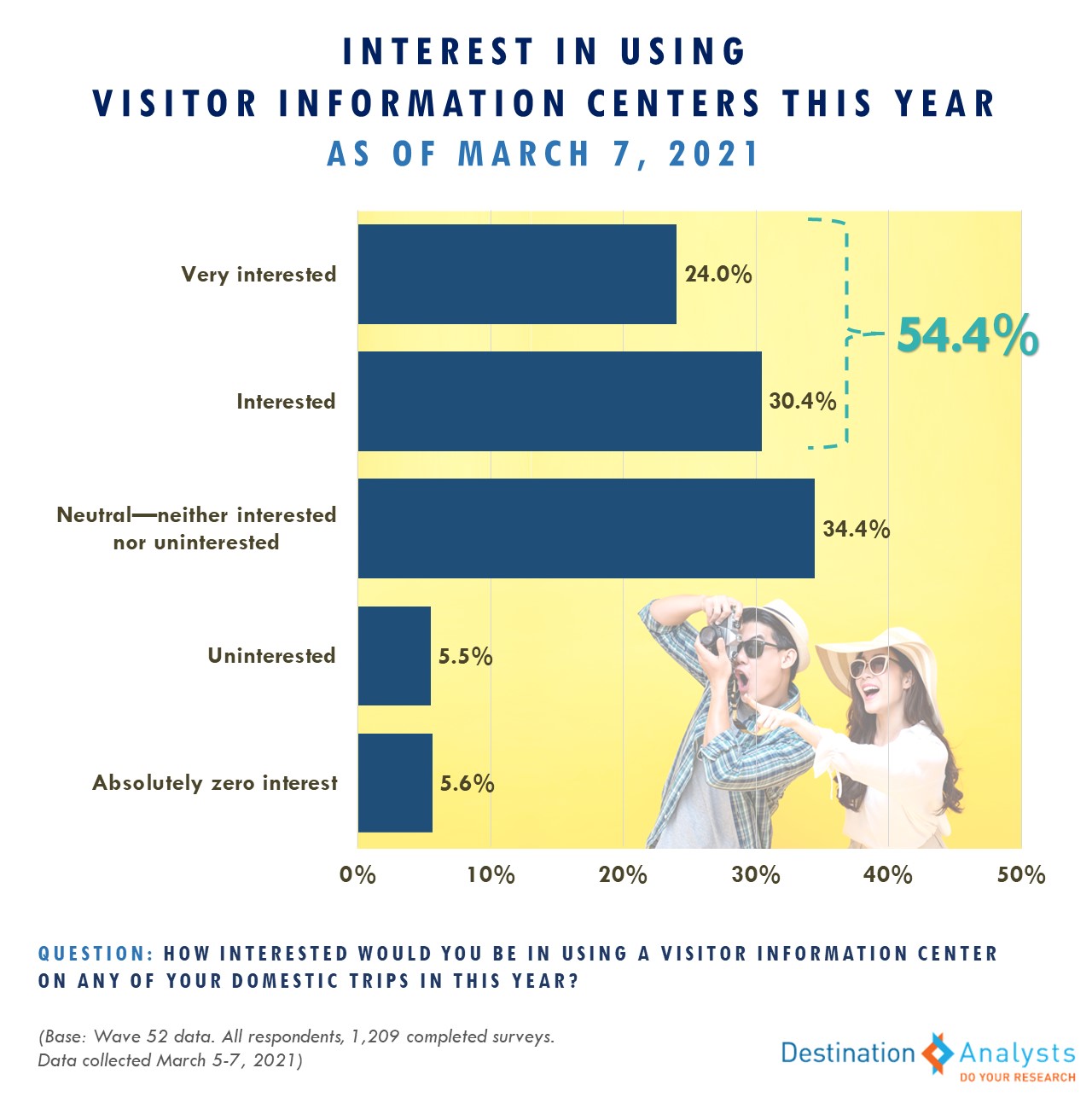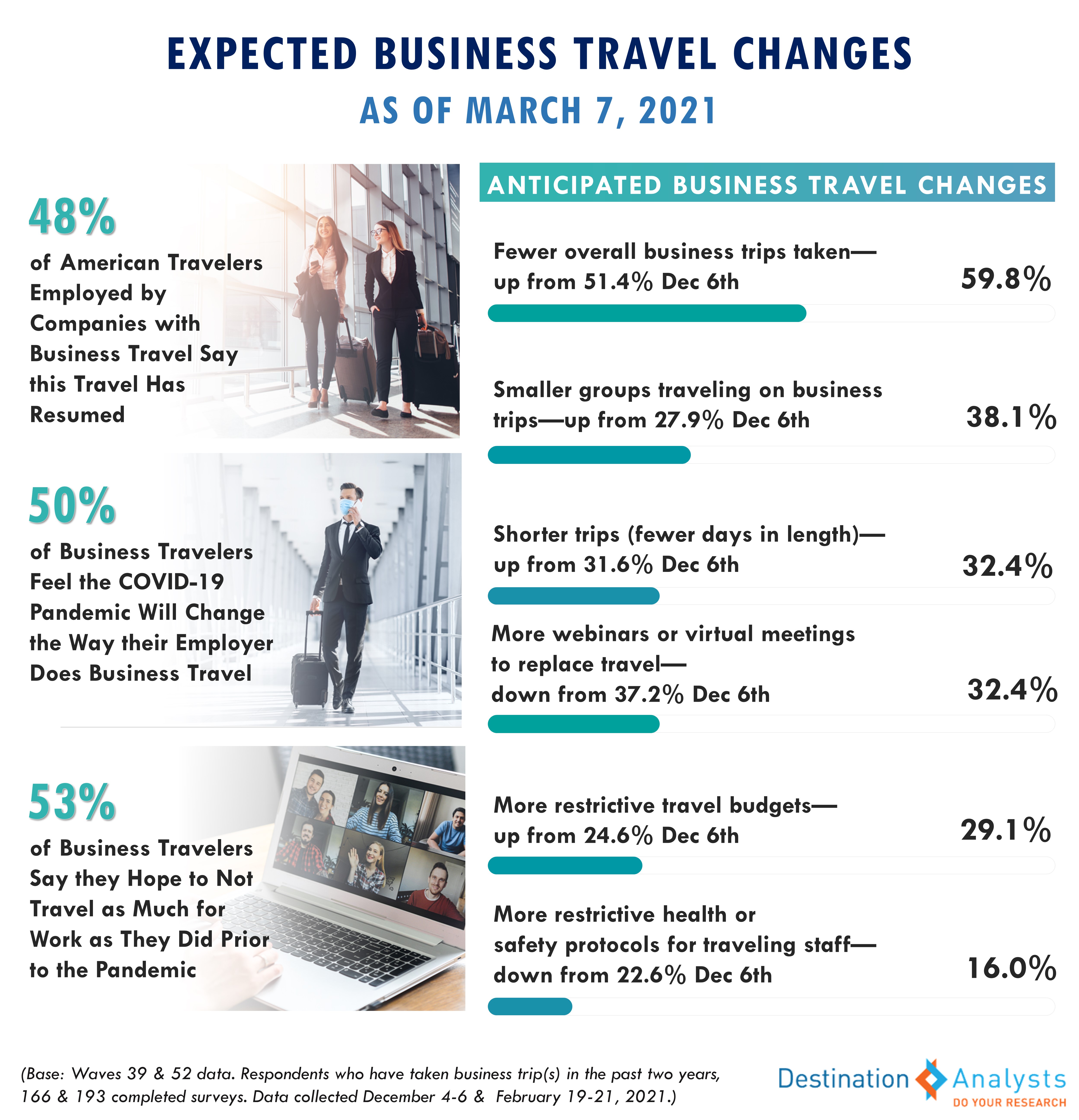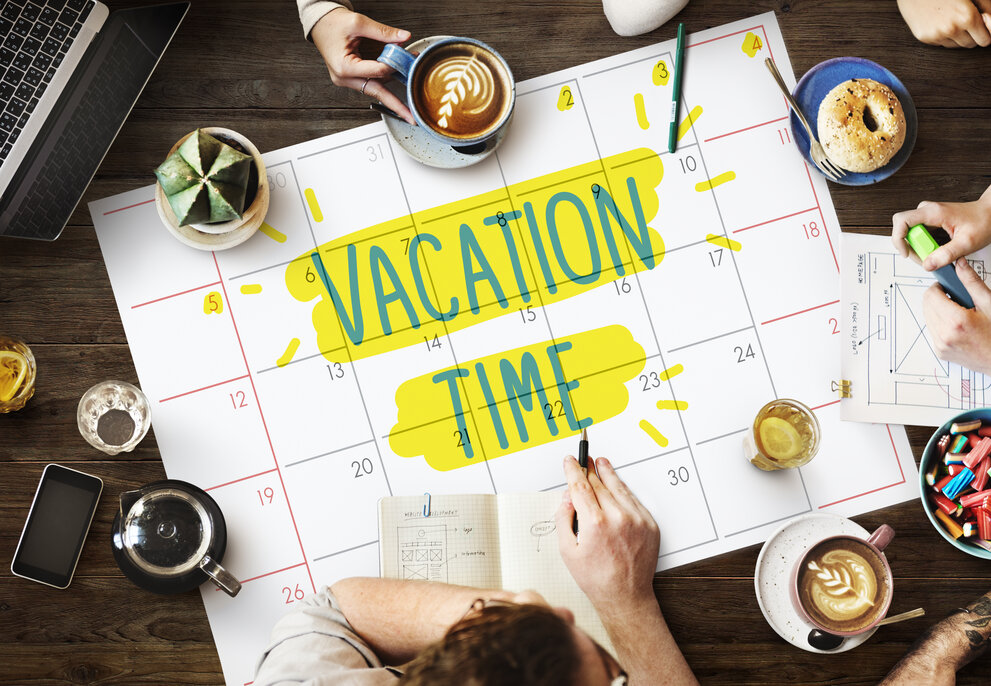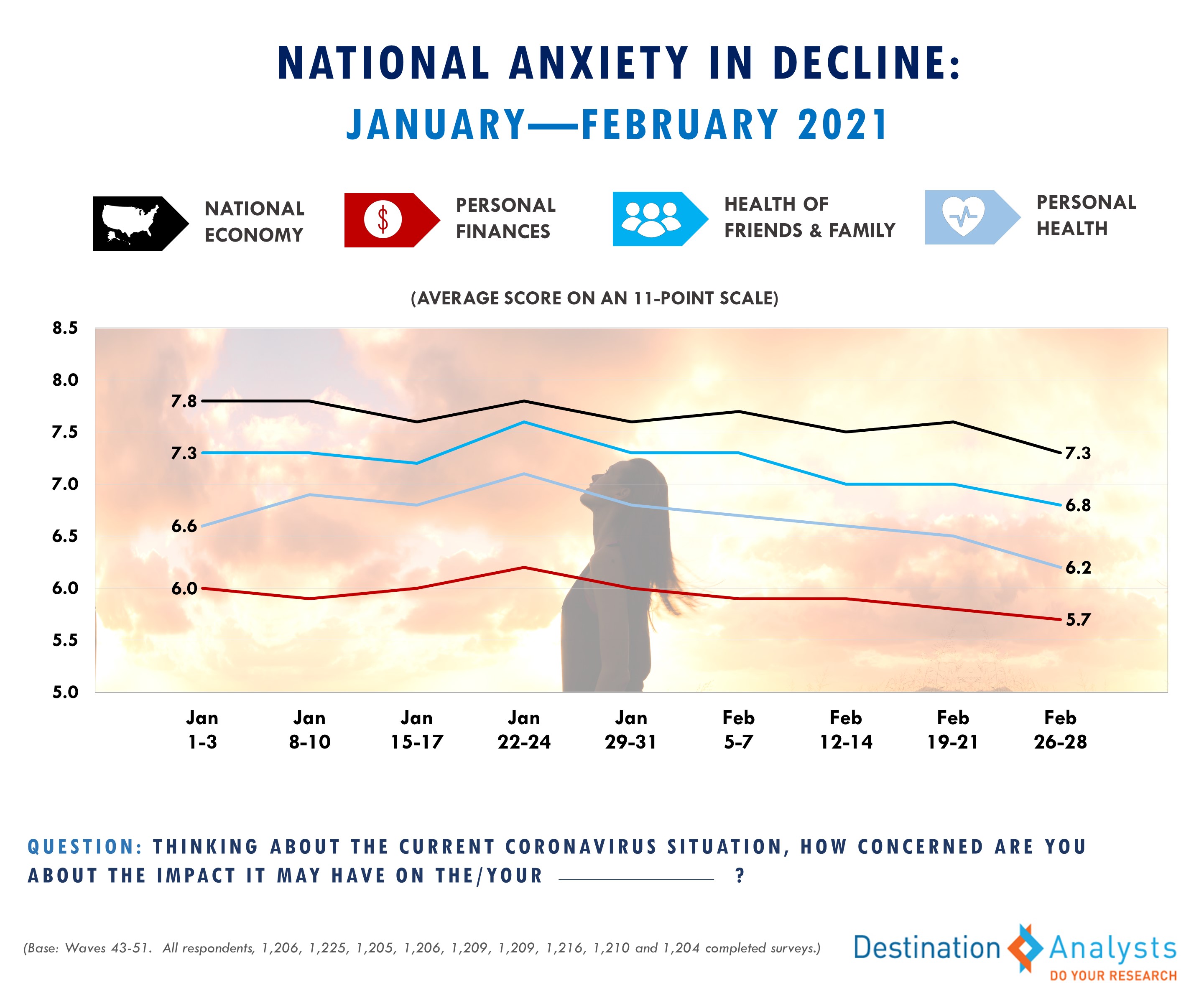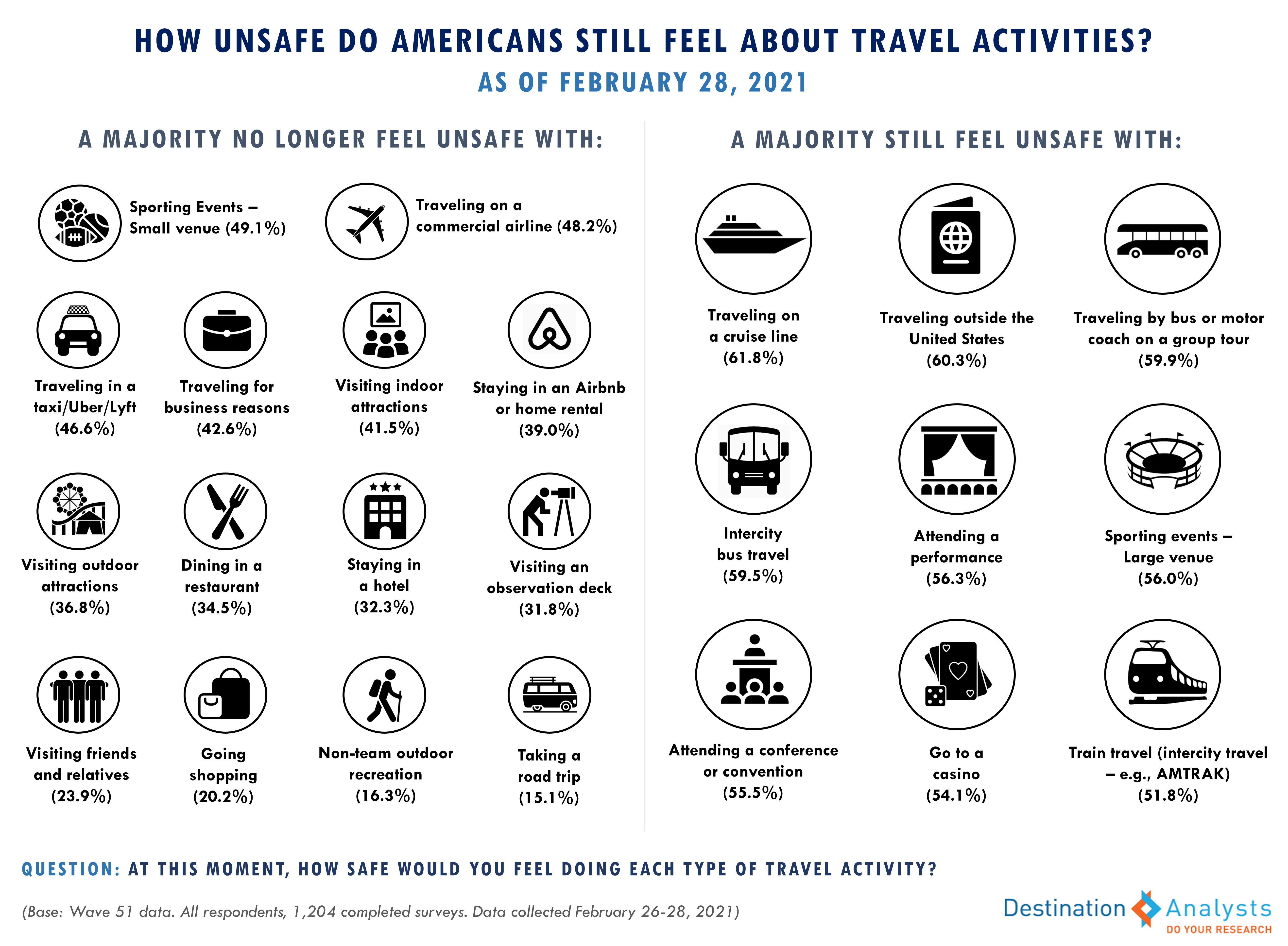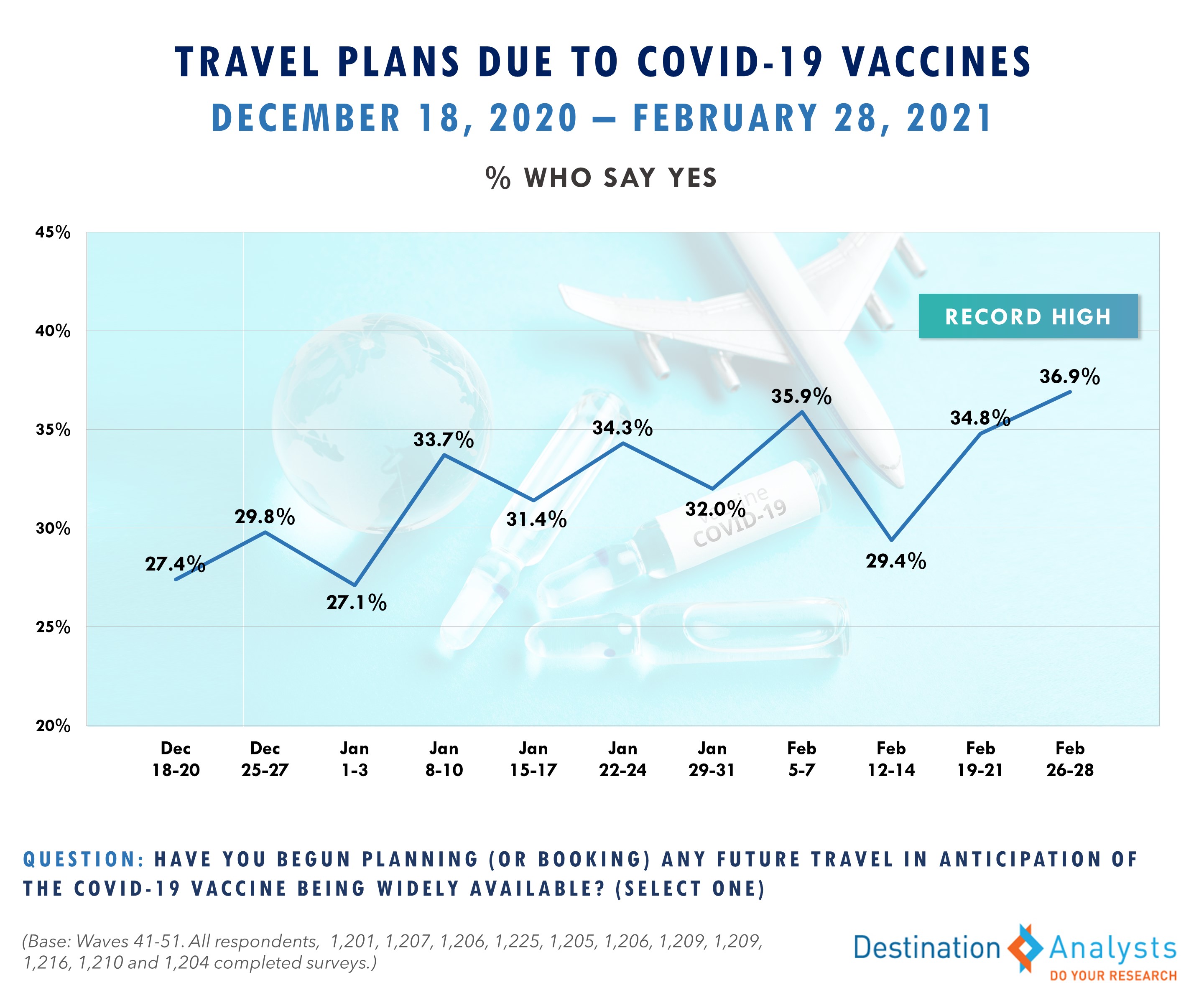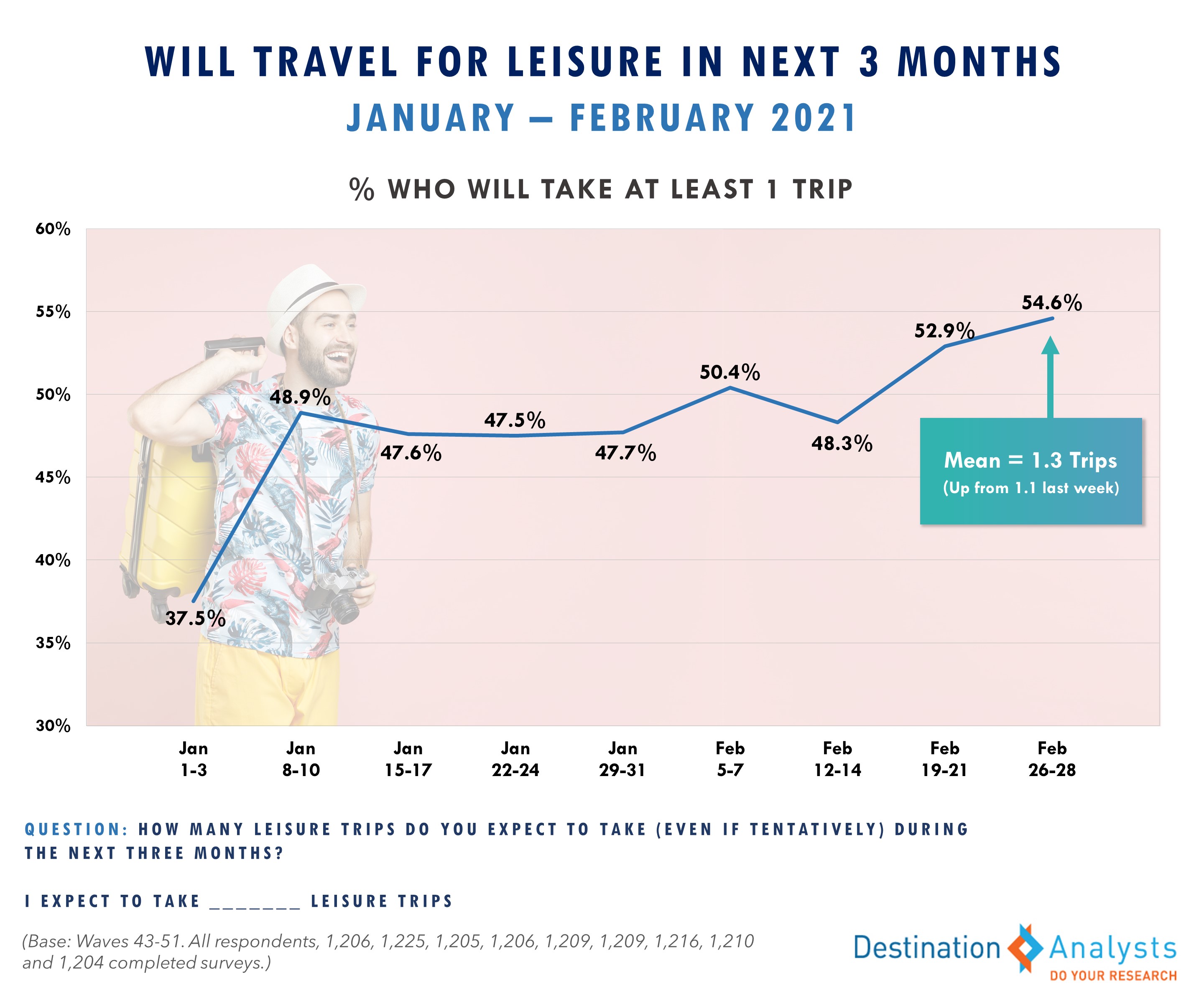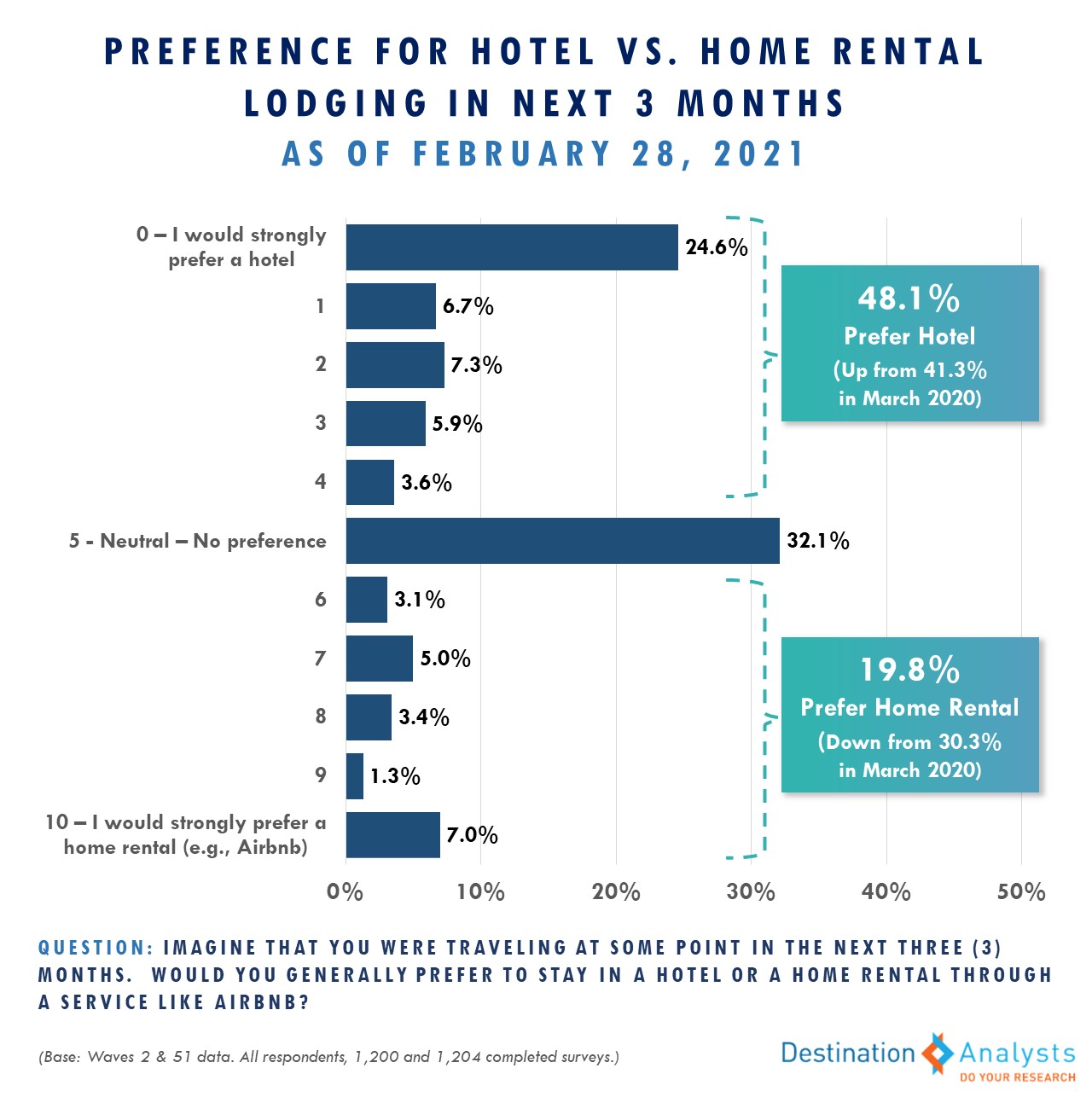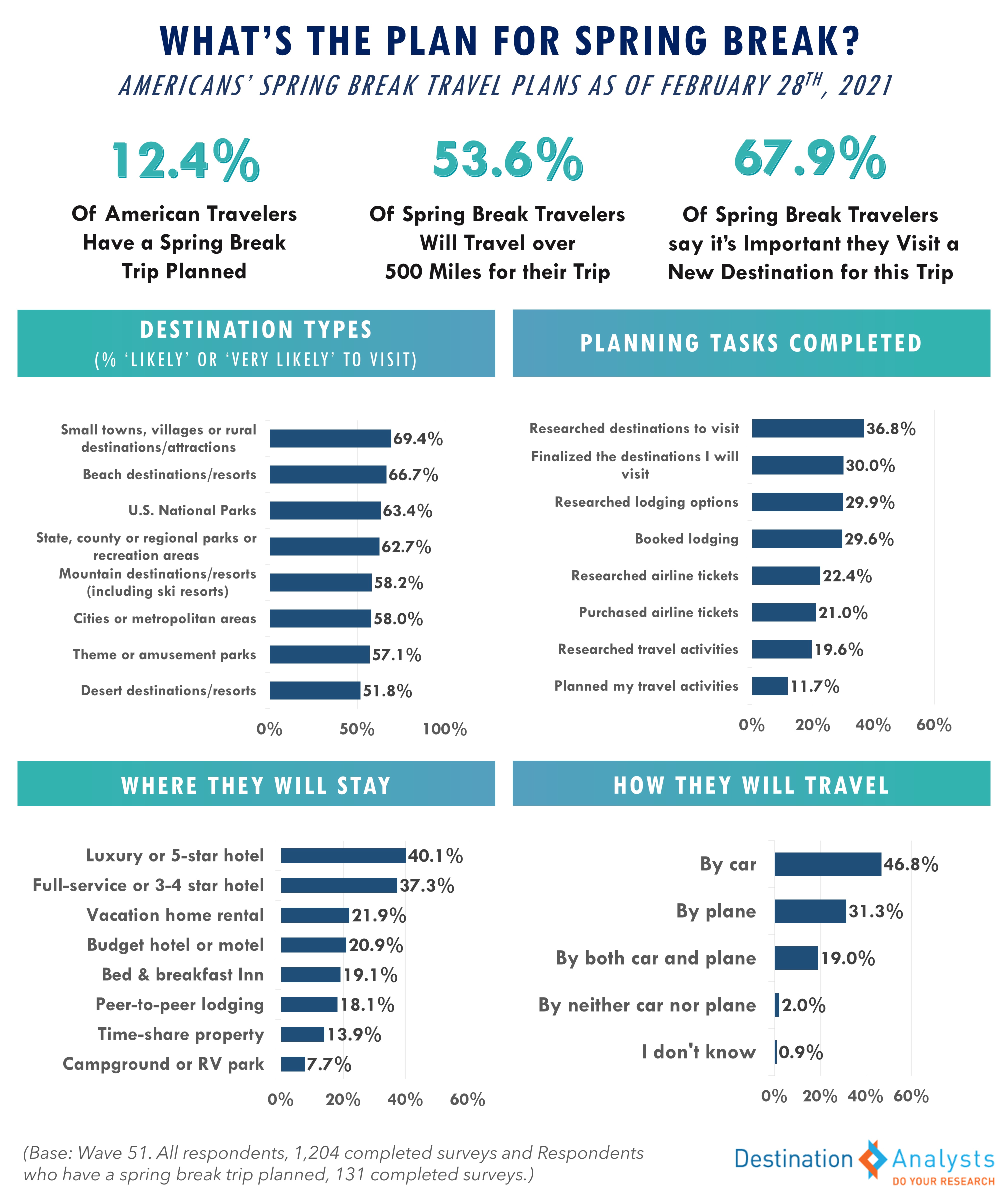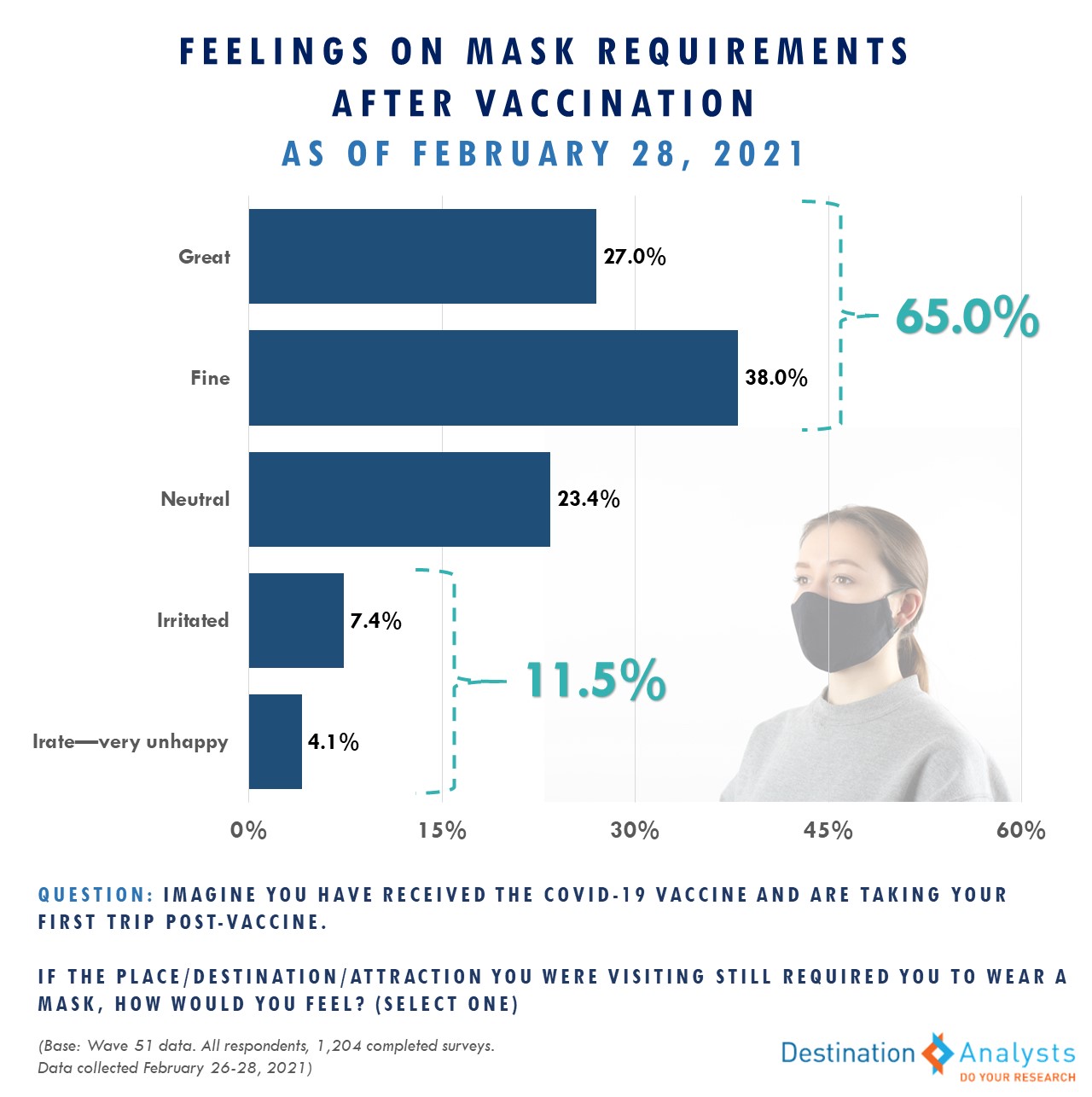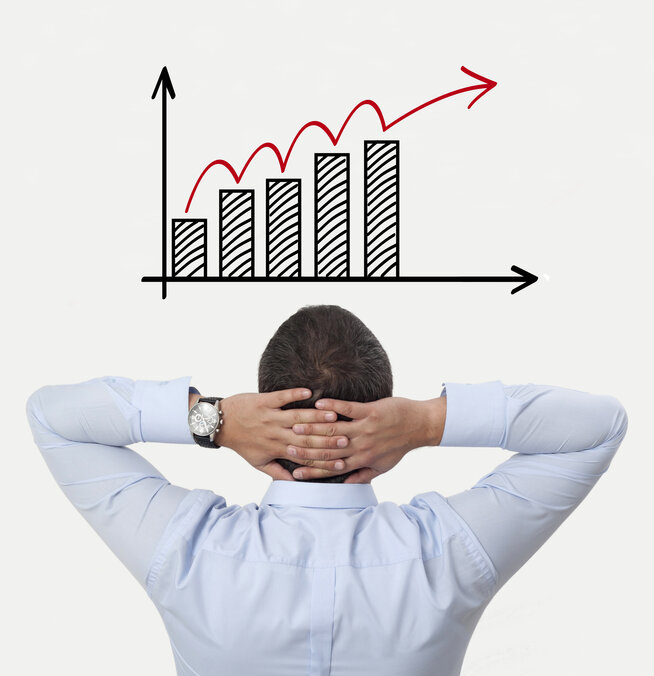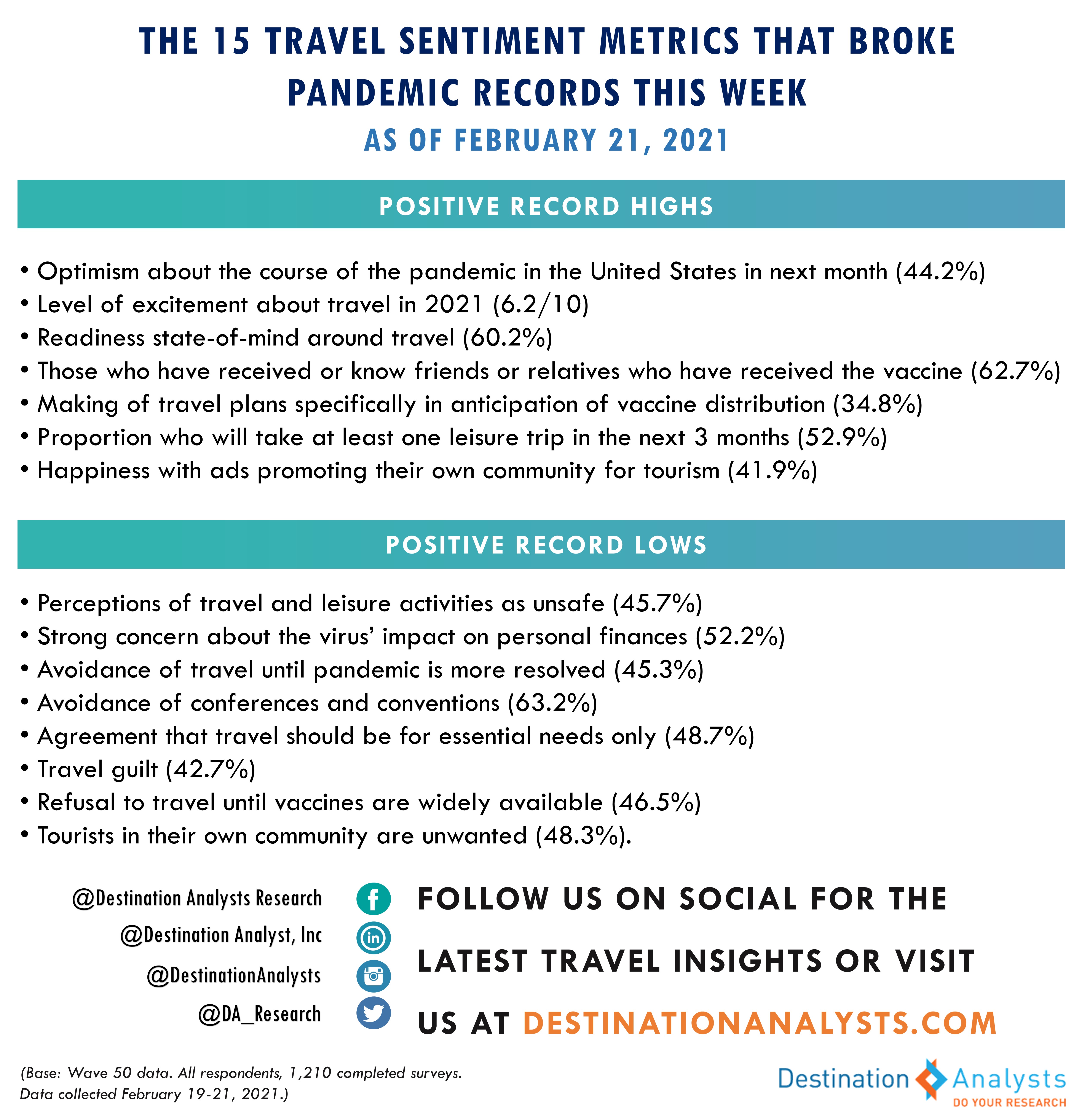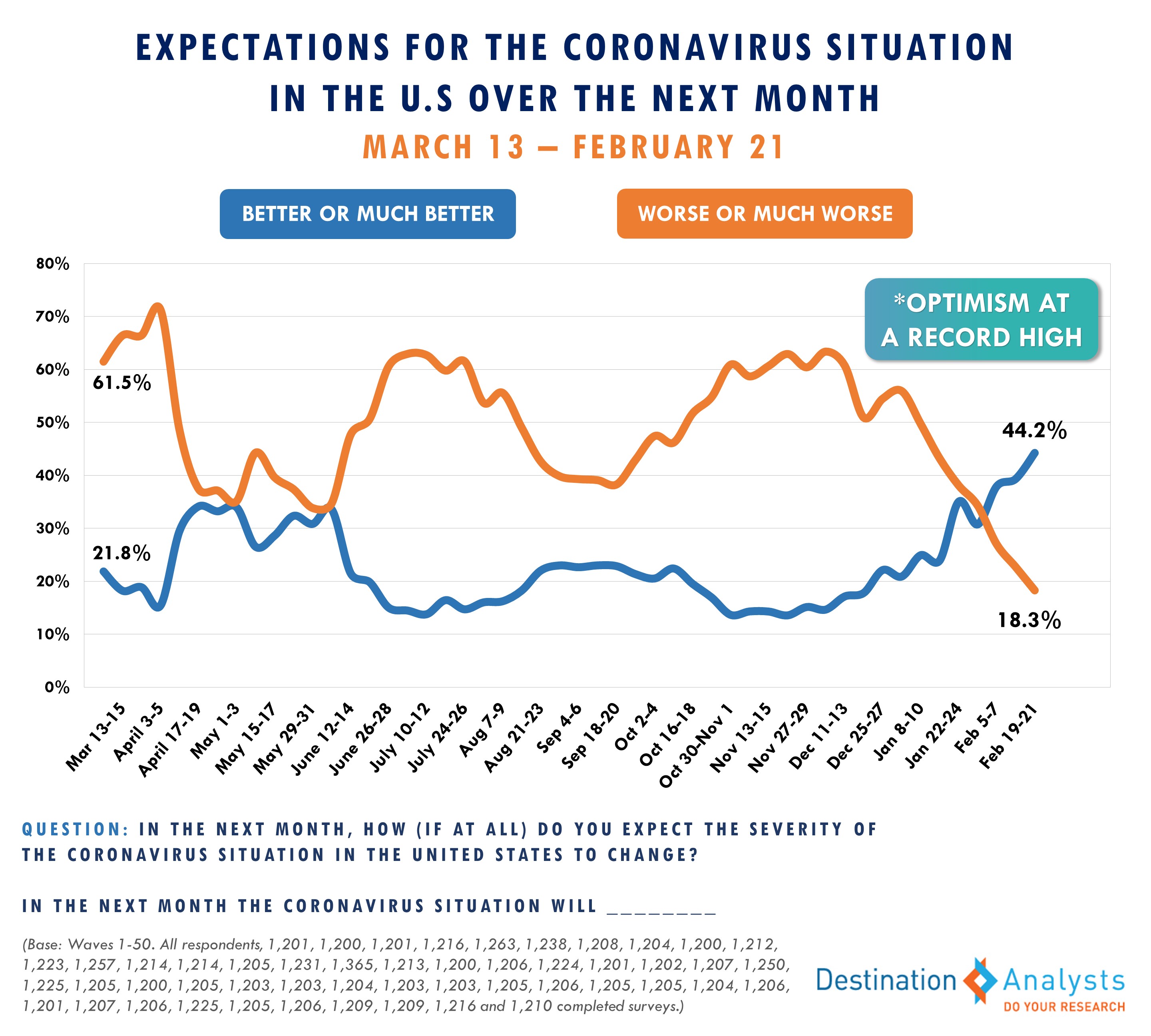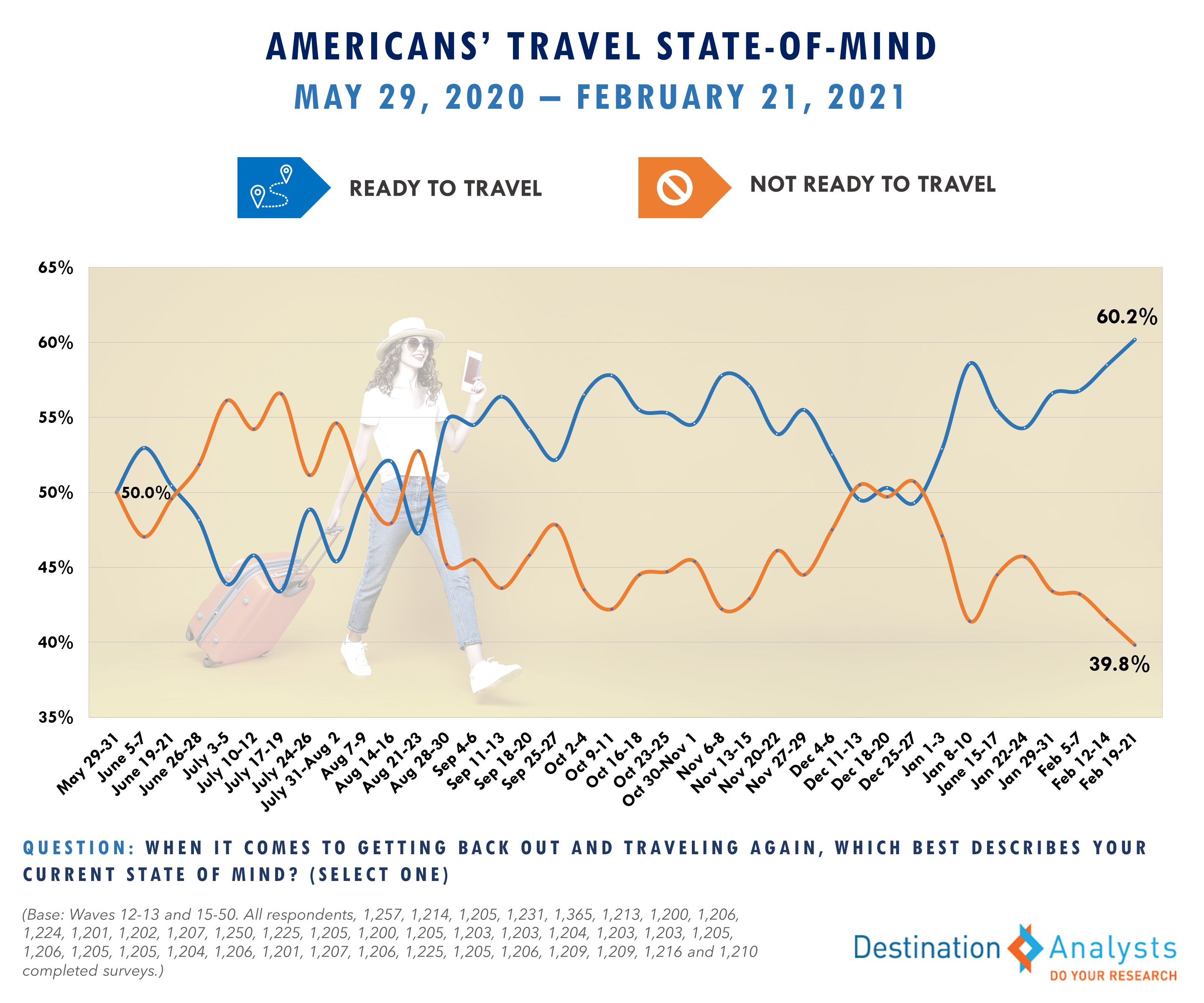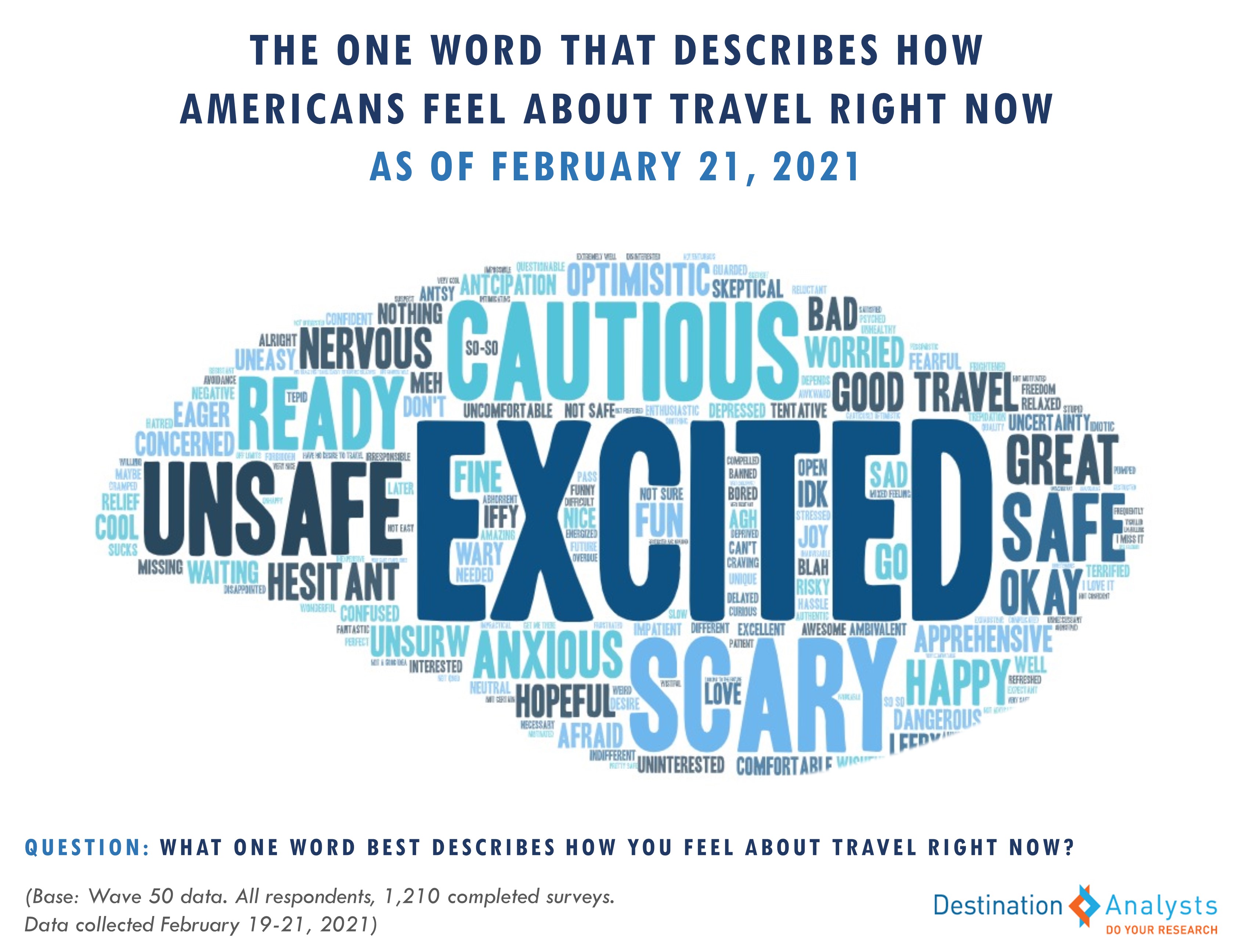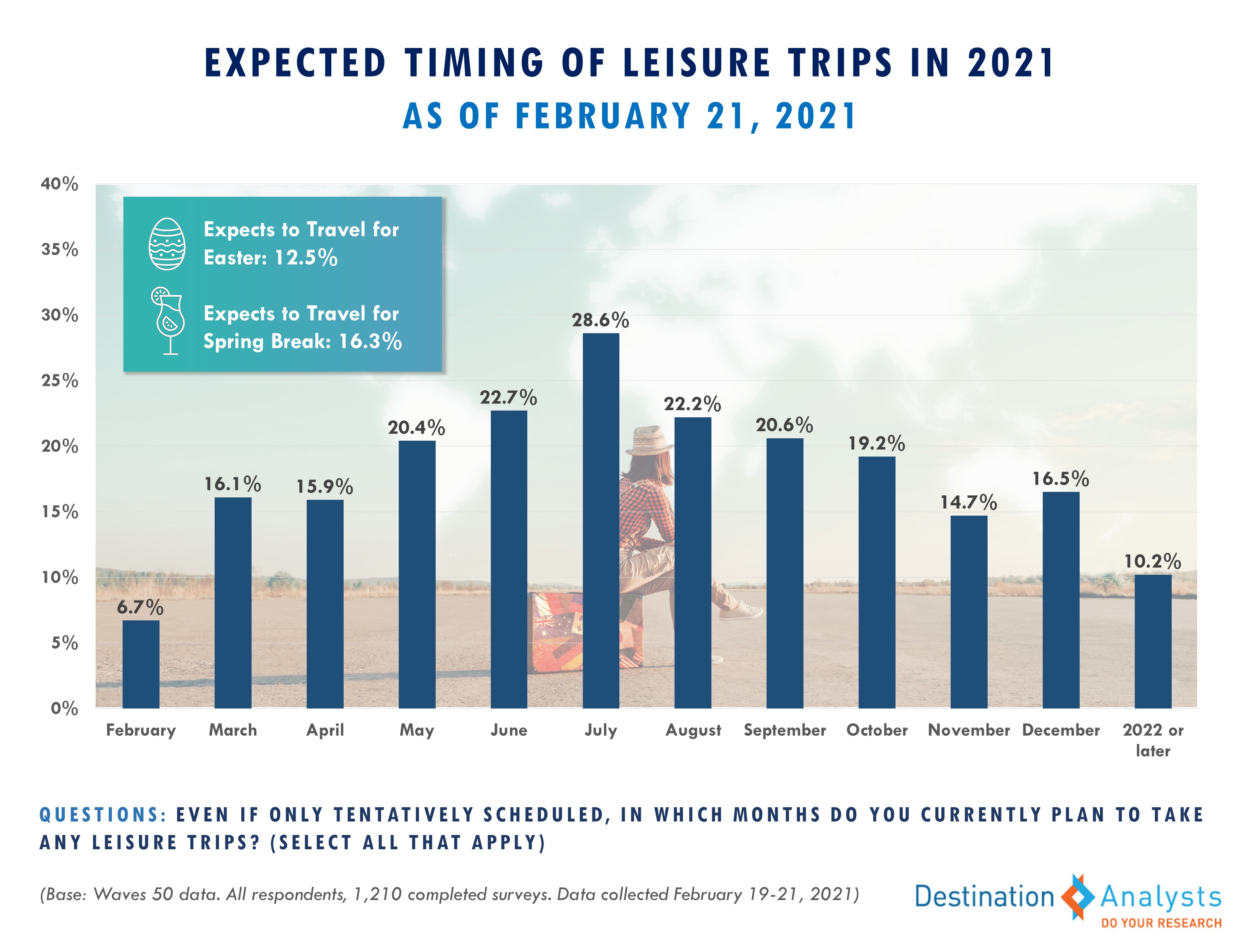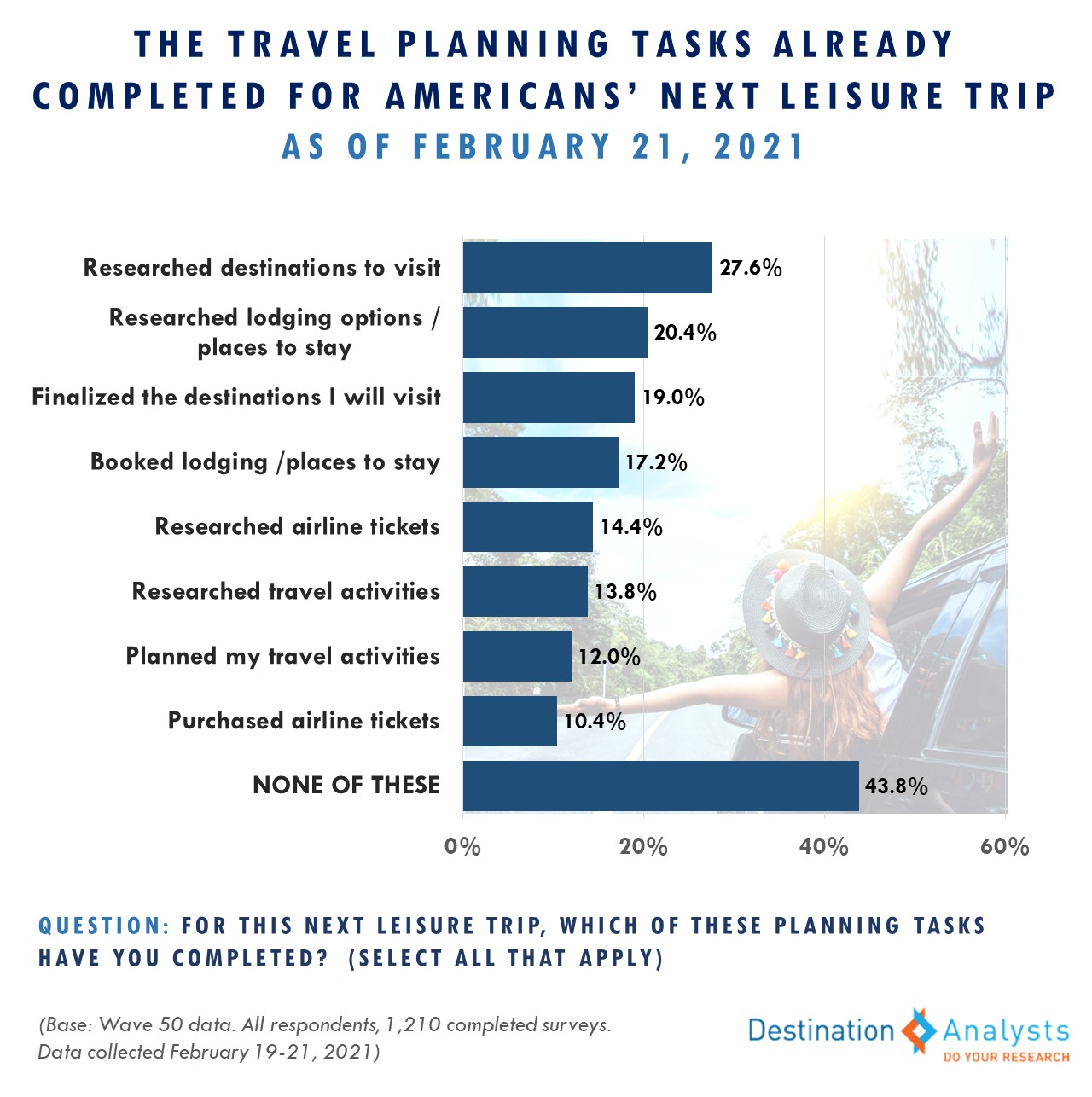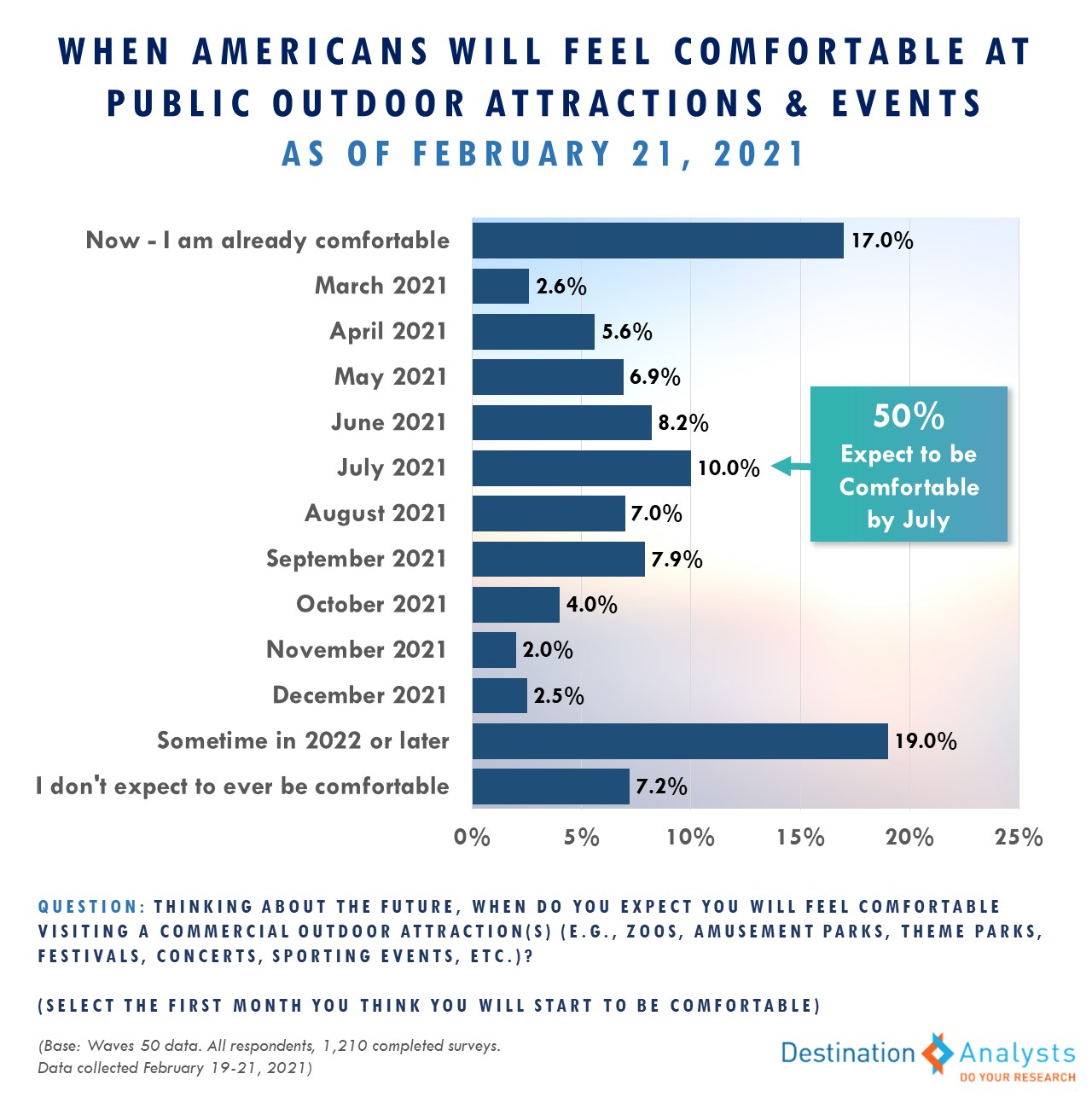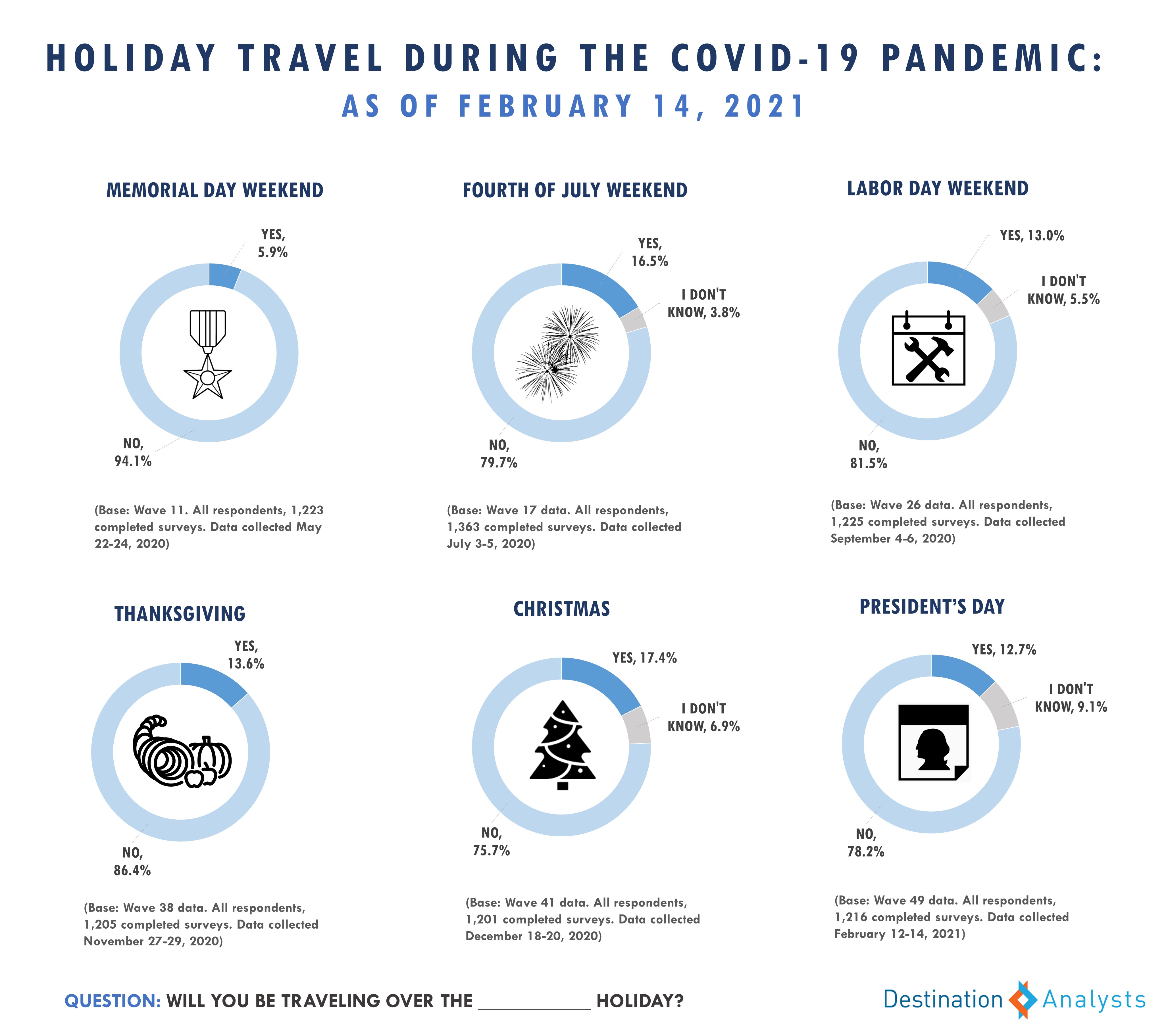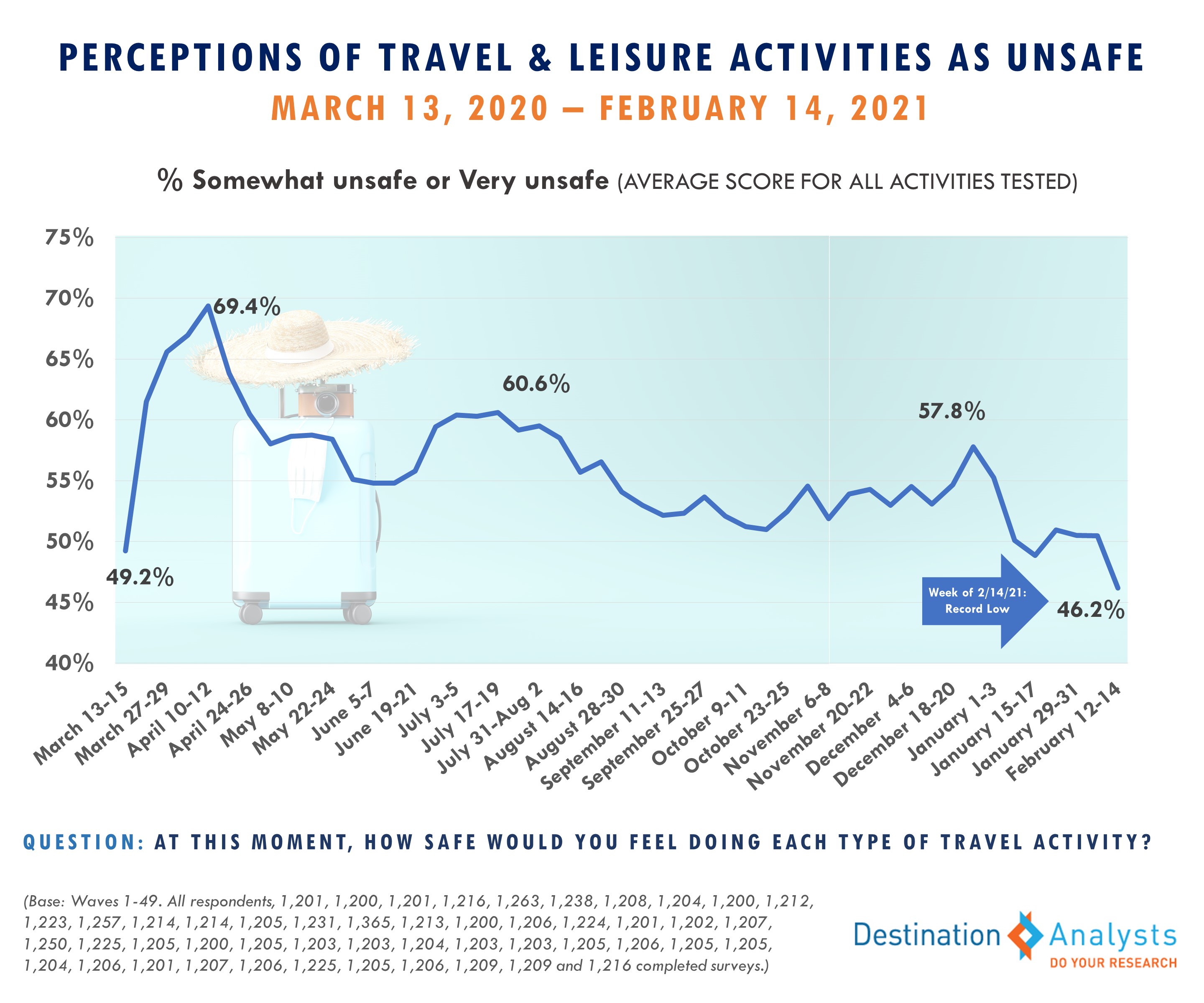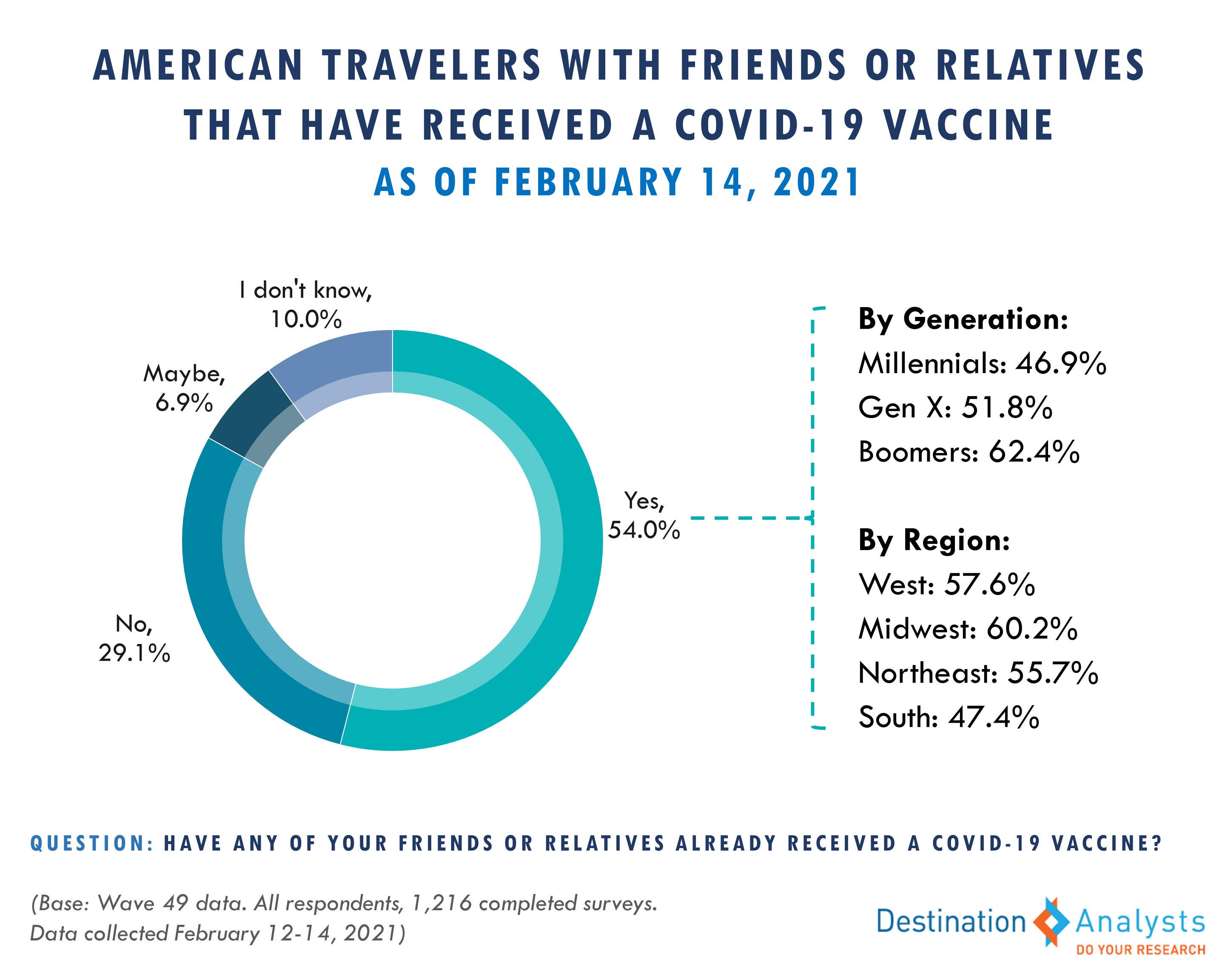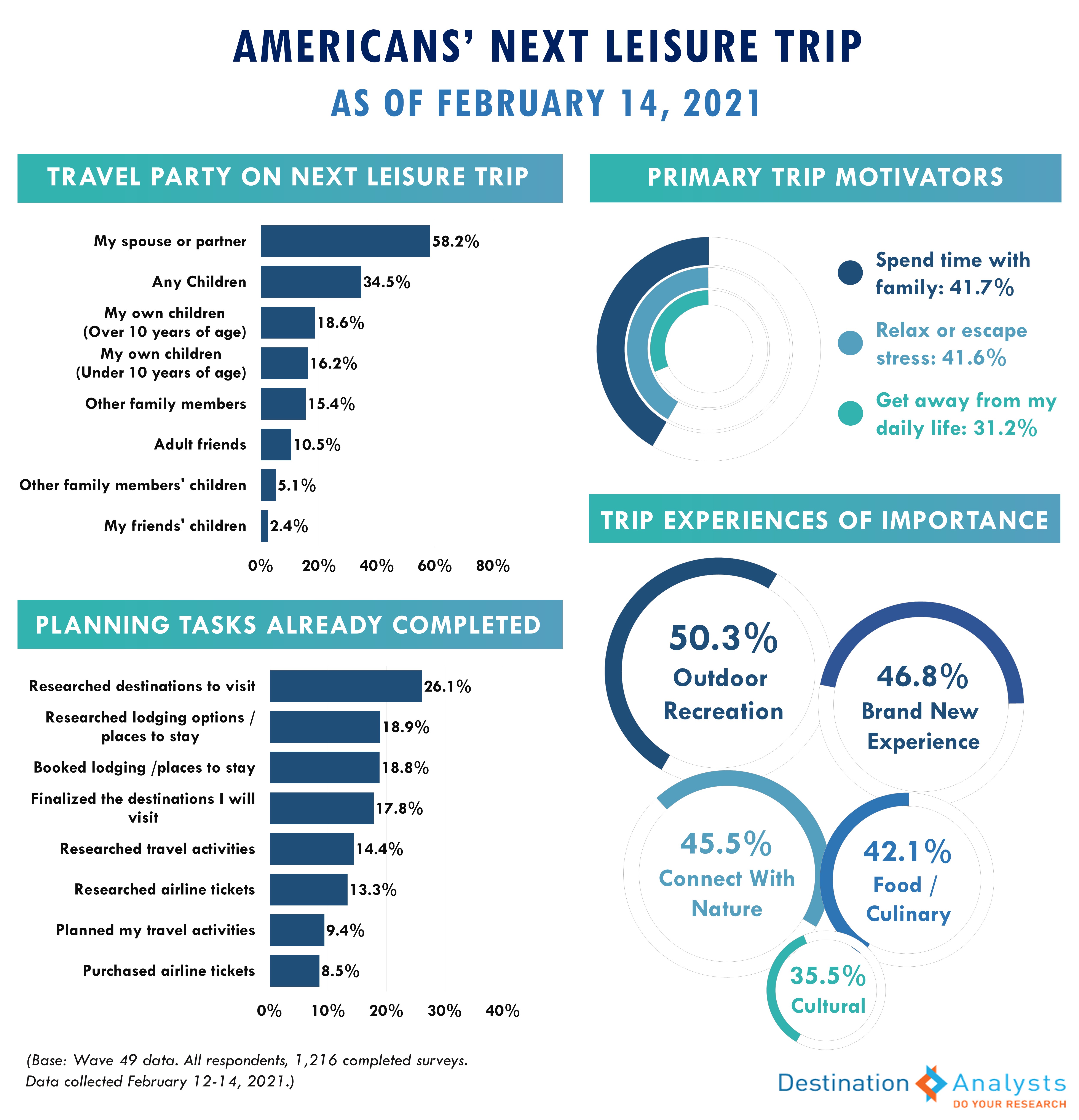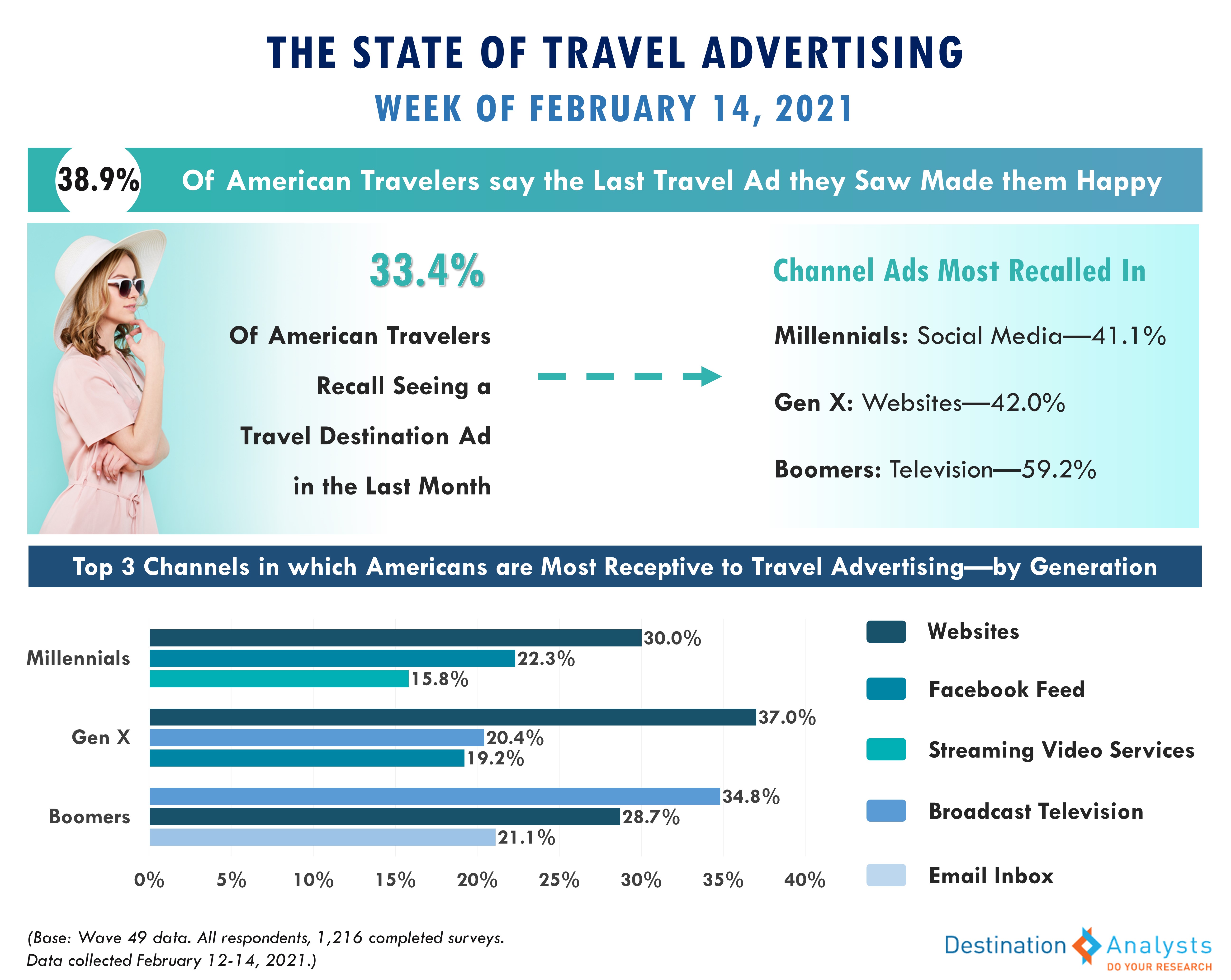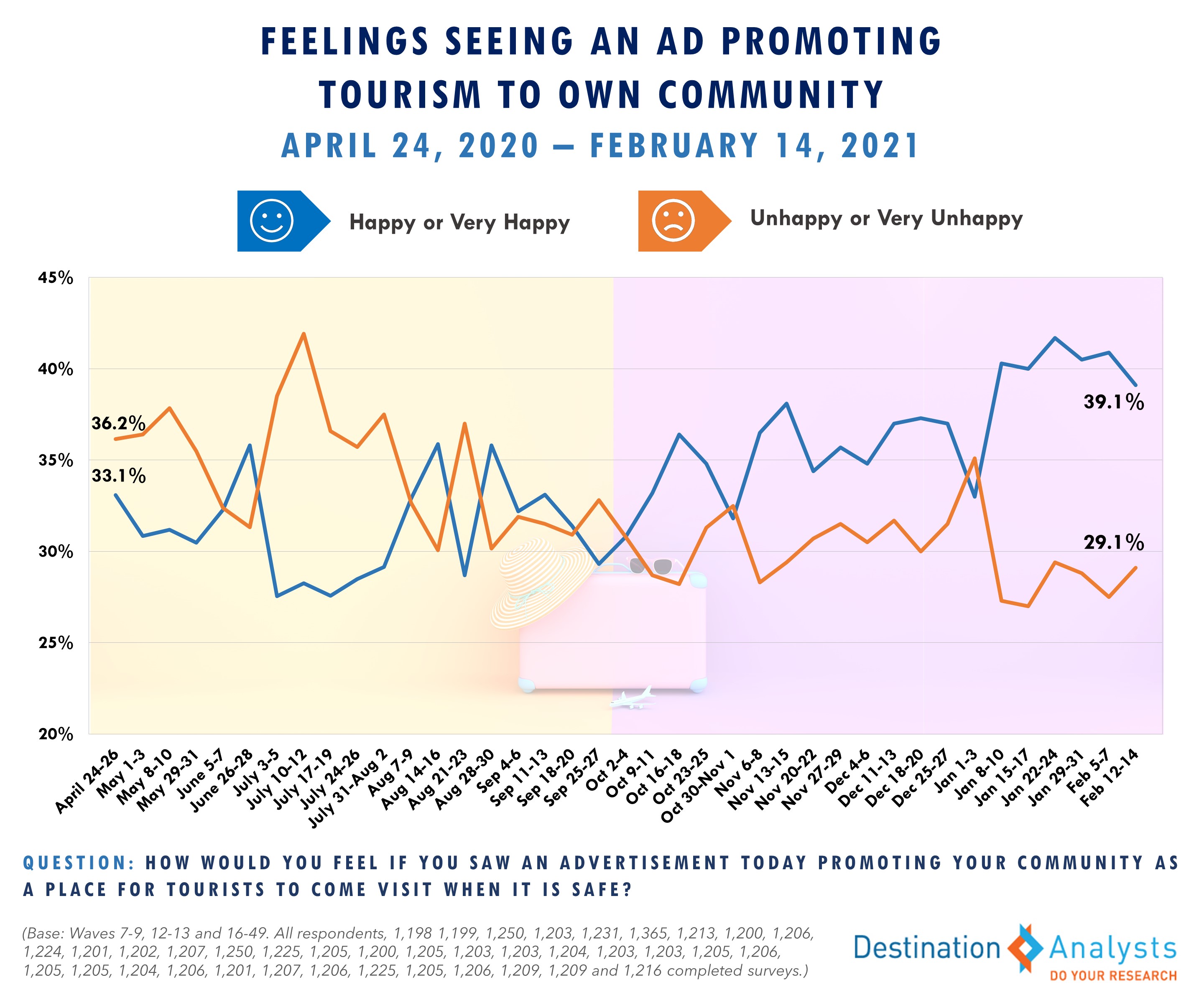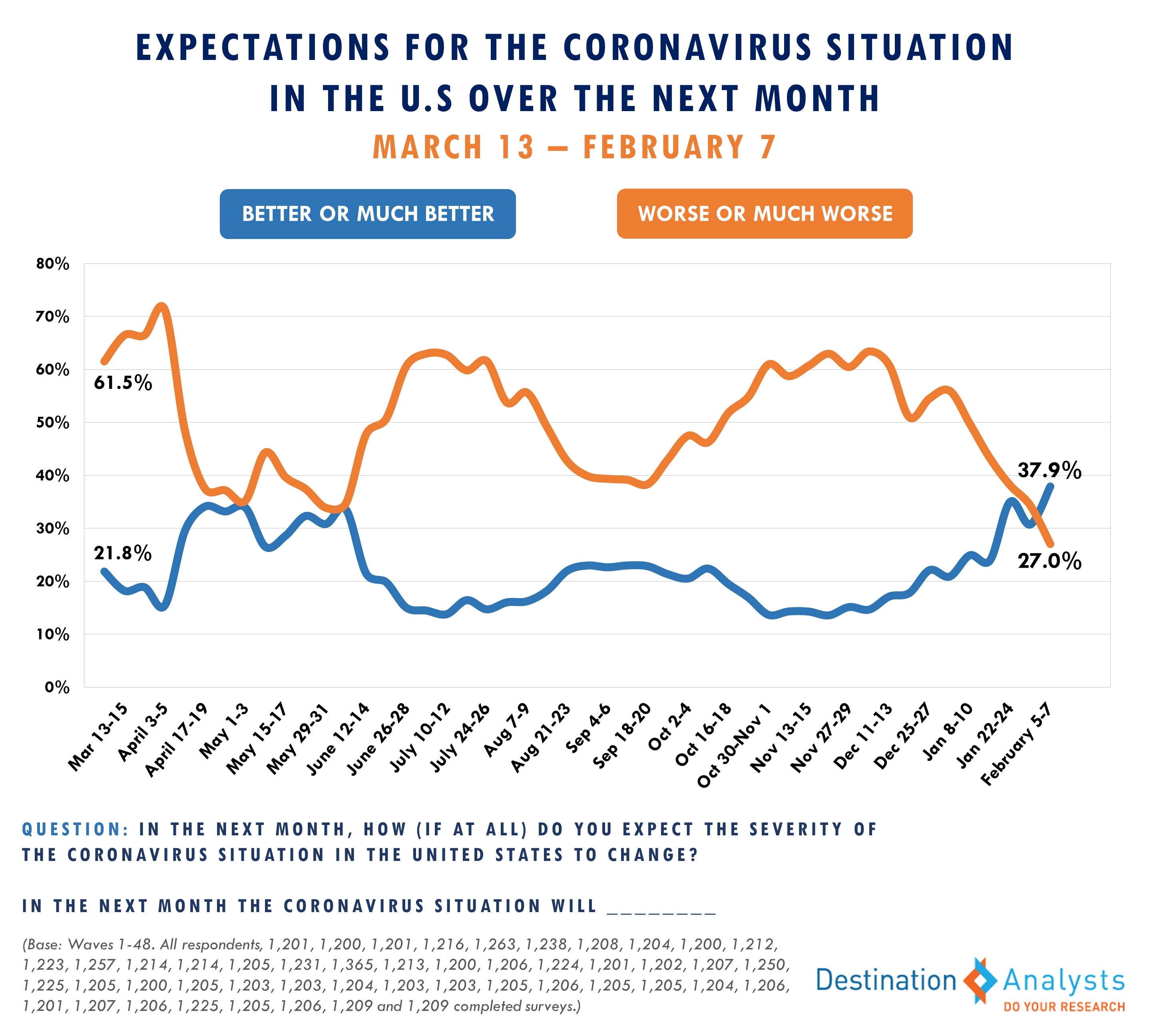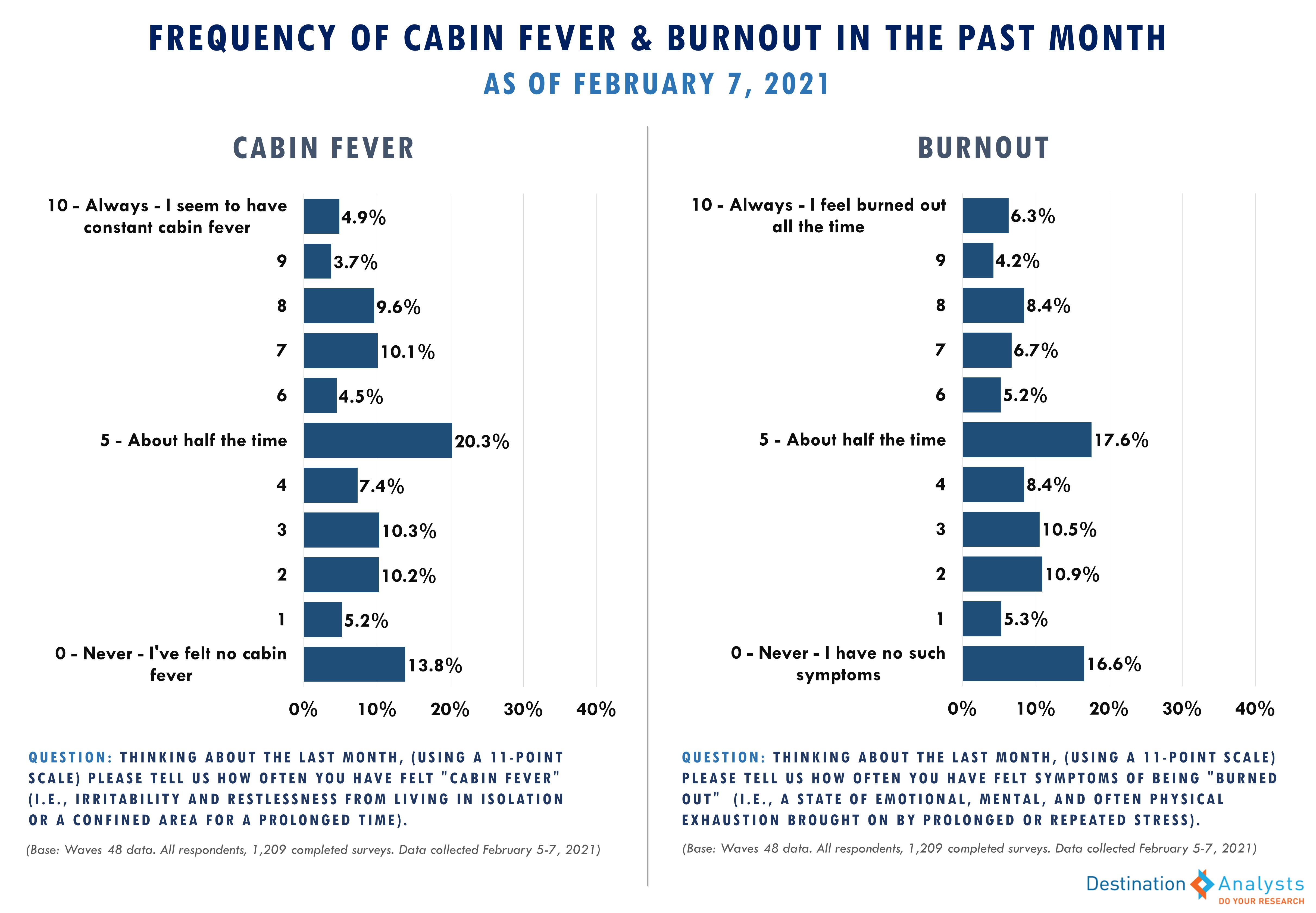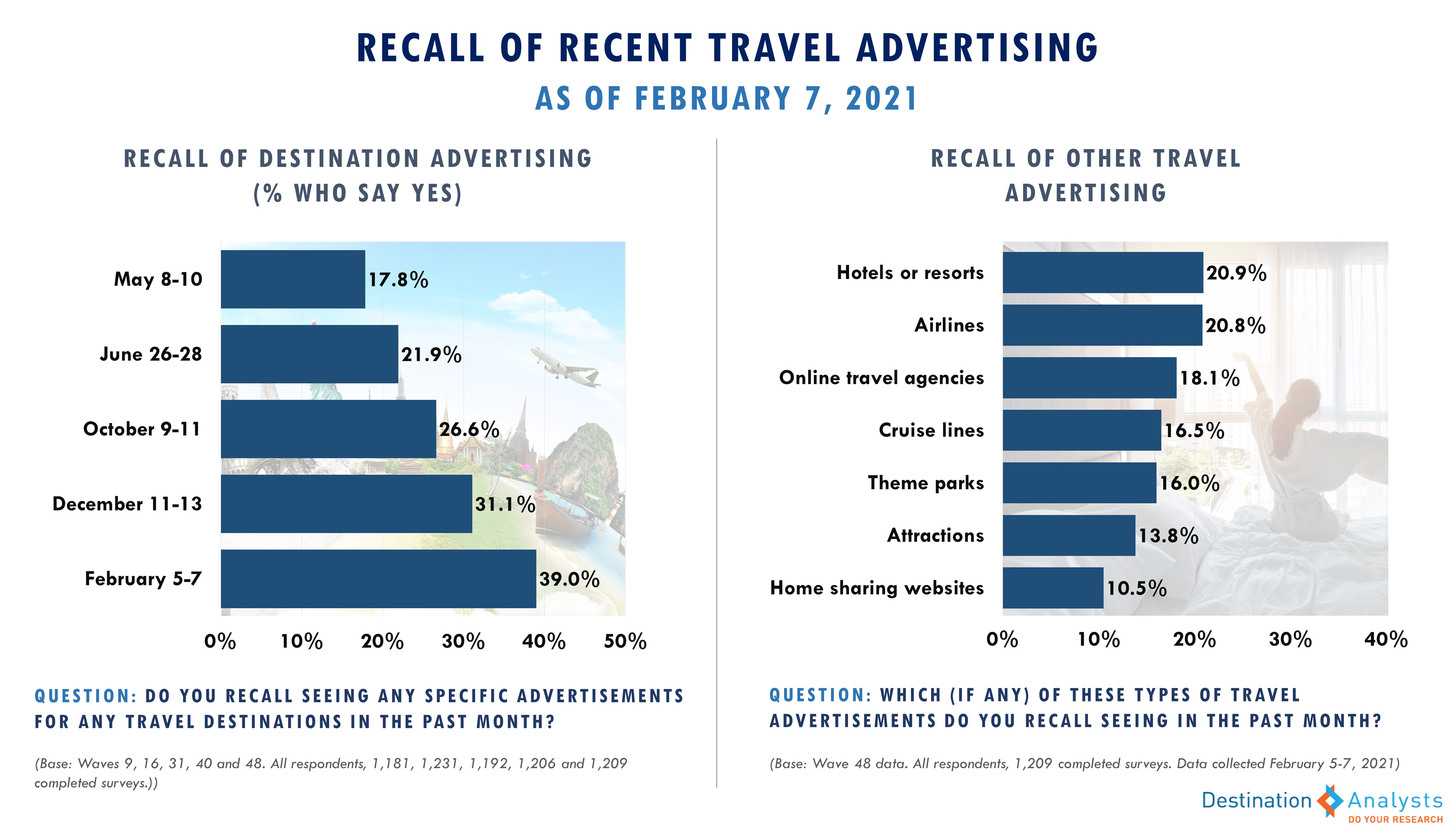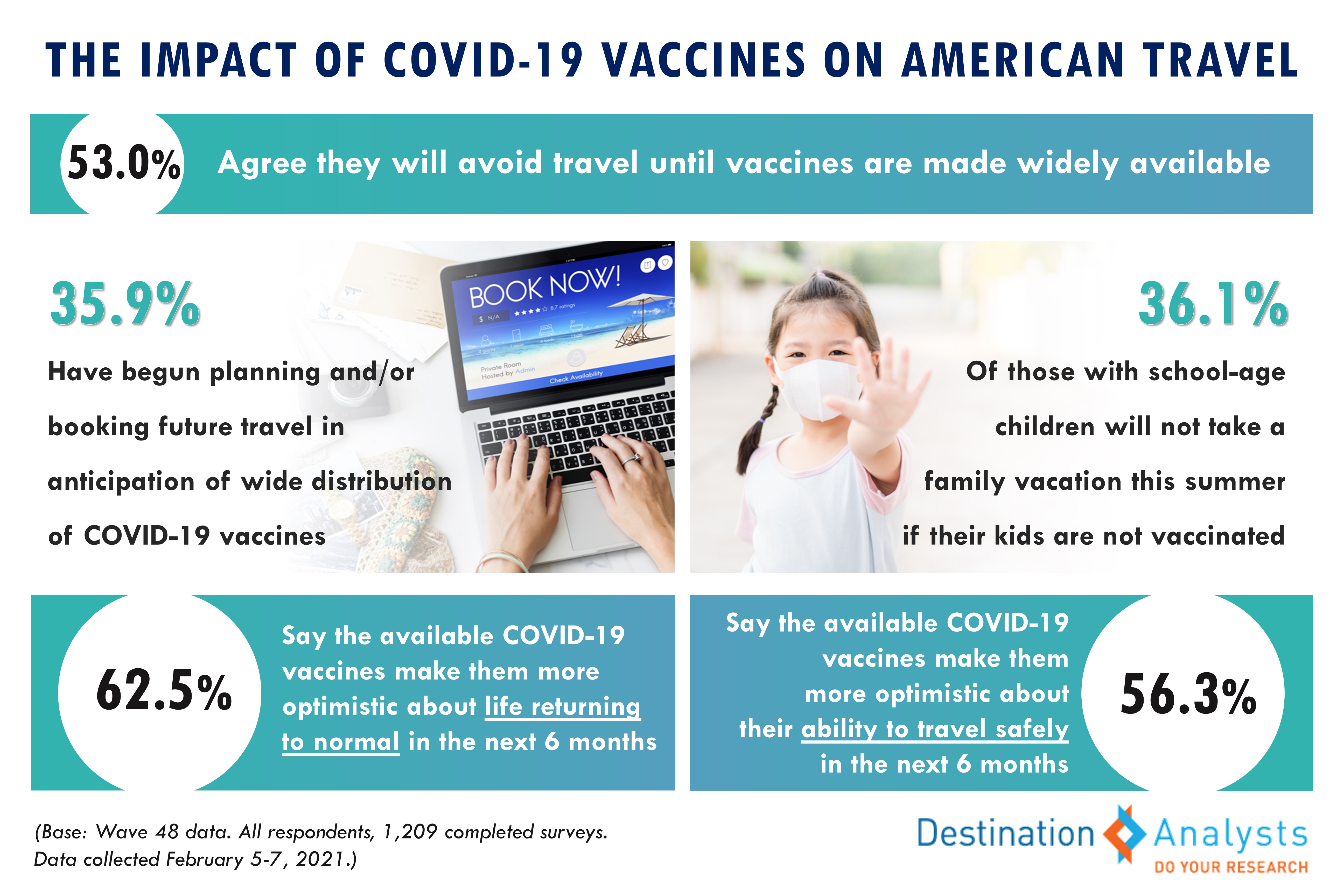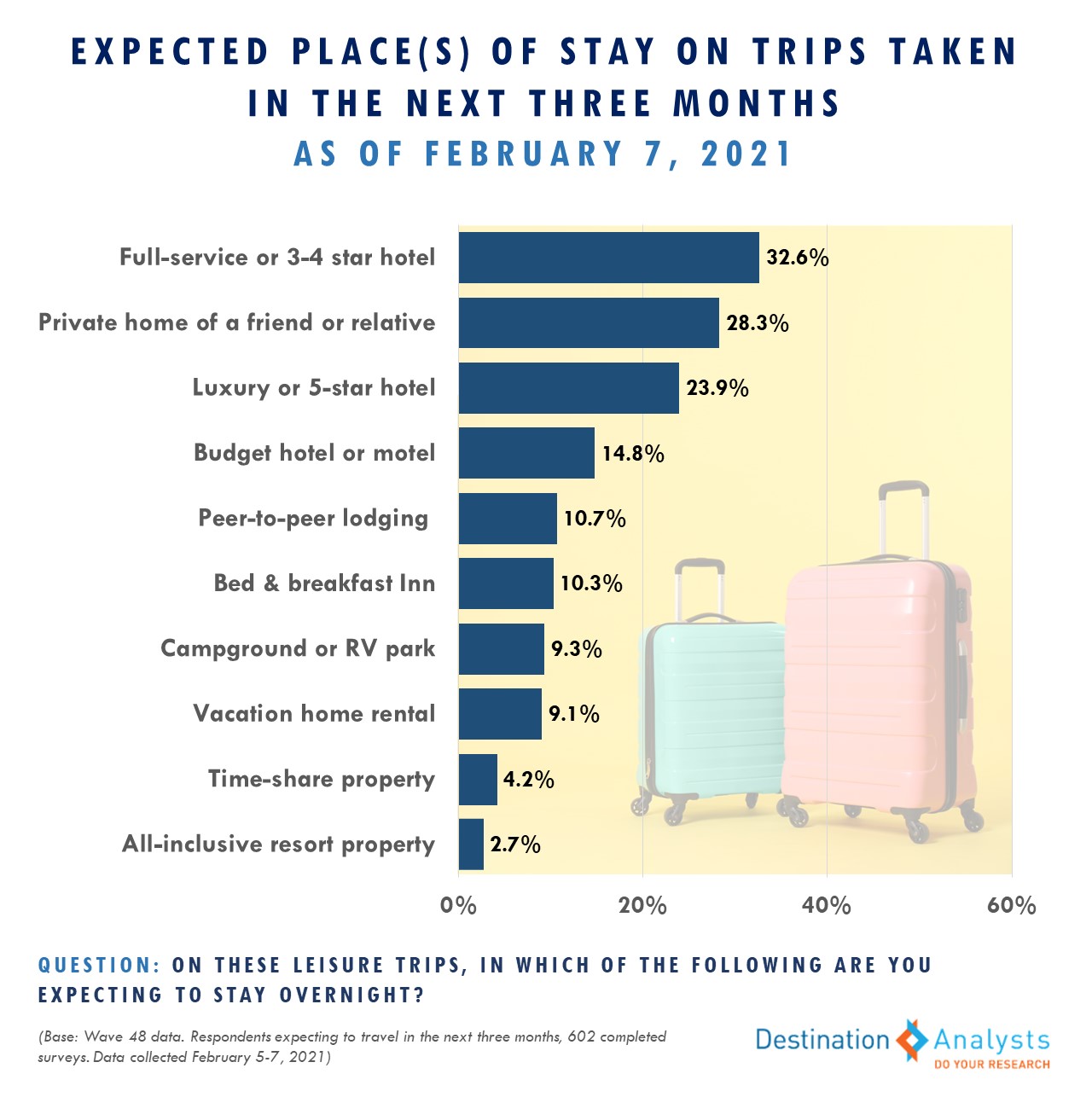Americans appeared to respond to the nation’s vaccination vision with increased optimism and record-setting travel sentiment and expected trips for their 2021. Still, the travel industry cannot lose sight that COVID-19 continues to be top-of-mind, with 43.1% of Spring Break travelers saying they remain “very concerned” about contracting the virus on their trip.
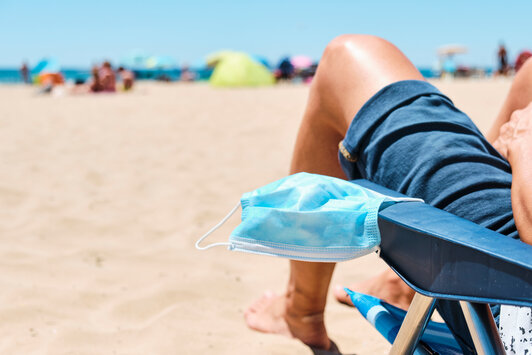
IMPORTANT: These findings are brought to you from our independent research, which is not sponsored, conducted or influenced by any advertising or marketing agency. Every week since March 15th, Destination Analysts has surveyed 1,200+ American travelers about their thoughts, feelings, perceptions and behaviors surrounding travel in the wake of the coronavirus pandemic, and explored a variety of topics. The findings presented below represent data collected March 12th-14th.
Key Findings to Know:
This week President Biden announced that states should execute vaccination plans which allow every American adult to be eligible for inoculation from COVID-19 by May 1st, and a vision that the July 4th holiday will be one celebrated in togetherness. American travelers’ response was a record number saying that the COVID vaccines are safe (70.9%), a record number of parents saying they will get their children vaccinated (55.2%) and a record number saying they have planned a trip specifically in anticipation of vaccines (42.9%). In total, 61.9% of American travelers say they have or will get vaccinated, up 5% from last week. Among those that have not yet received their shot, nearly 60% expect they will by July. Vaccine jealousy is a thing, too: 43.5% of all American travelers report feeling jealous of those that have already received their vaccine, including 51.2% of Millennials.
Americans’ optimism about the course of the pandemic is up a staggering 40 percentage points since the start of the year, with 60.3% feeling things will get better in the next month. This optimism especially shines through in their feelings towards travel. Fully two-thirds are now in a travel readiness state-of-mind. Americans rate their level of excitement about travel this year a 6.6 on a scale from 0-10, up from 6.2 in just the past week. Americans set another pandemic record in their openness to travel inspiration, hitting 6.5 on the 11-point scale. Nearly half (48.9%) can now be motivated by discounts and deals to take a trip they had not previously considered.
A factor in this growing openness and excitement towards travel is certainly an increasing sense of safety. A majority of American travelers no longer feel unsafe traveling in taxis or rideshares, visiting indoor attractions, dining in restaurants, shopping, flying on airplanes and staying in hotels. This week, 41.5% are firmly confident they can travel safely in the current environment, up nearly 5 percentage points since the week prior, and 17 percentage points since January 3rd. Still, COVID continues to be top-of-mind and should not be discounted in travel messaging. As an example, 43.1% of Spring Break travelers say they remain “very concerned” about contracting the virus on their trip.
Over 70% of American travelers dreamt of or planned travel in the past week, and these actions look to increasingly be turning into trips. The average number of leisure trips Americans are reporting they will take in 2021 increased this week to 3.0 after hovering at 2.8 for much of the year. All months from June forward saw increases in the percent of Americans who said they had trips at least tentatively planned in them. Fully 15.0% of American travelers said they made travel reservations and/or bookings in the last week, largely for hotels and airline tickets. In fact, 35.5% of American travelers say their very next trip by air will be by August.
As we reported last week, our cities continue to show signs of recovery. Over one-third of those Americans traveling in the next three months will be visiting an urban destination. In looking at what attributes are important to travelers as they consider cities as places to visit, safety still remains largely on top, with 74.3% saying this is important. A relaxing environment, good weather, welcoming atmosphere, ease in getting around and scenic beauty are also most critical. Where the pandemic is still most challenging the experiences travelers typically seek from urban destinations is in sports, festivals, performing arts and other live events, but other tenets such as museums and dining scene are also still seen as challenged. These perceptions are likely to change as vaccinations increase and more reopening occurs.
Finally, Americans are returning to a comfort with tourism closer to home. A pandemic-record 52.1% now feel comfortable going out for leisure activities within their own community. While 46.9% of Americans still agree they don’t want tourists in their own community yet, this is down 12 percentage points since the start of the year. Another pandemic record 47.7% said they would be happy if they saw an ad promoting their community for tourism when safe, up from 35.1% January 3rd.

